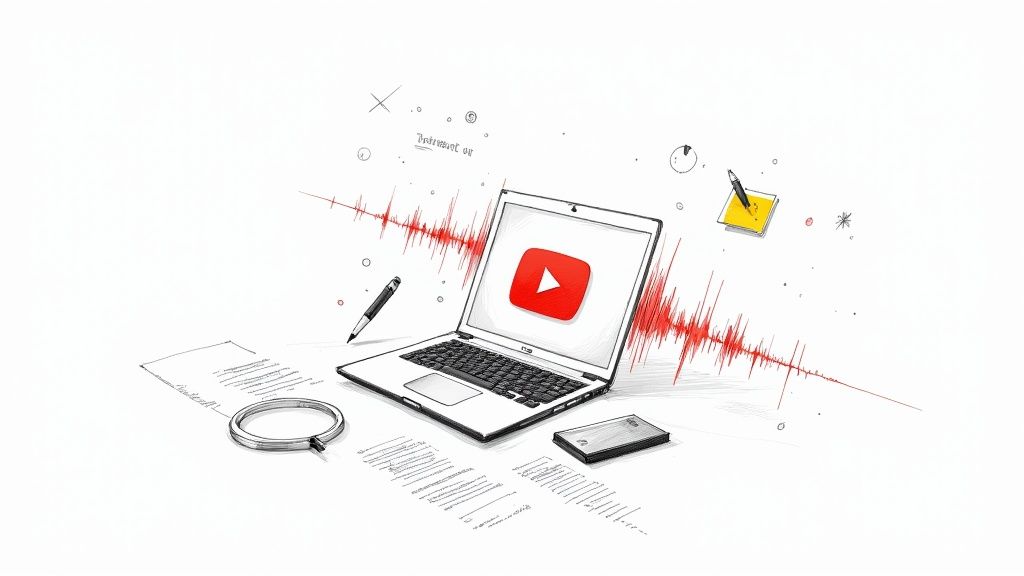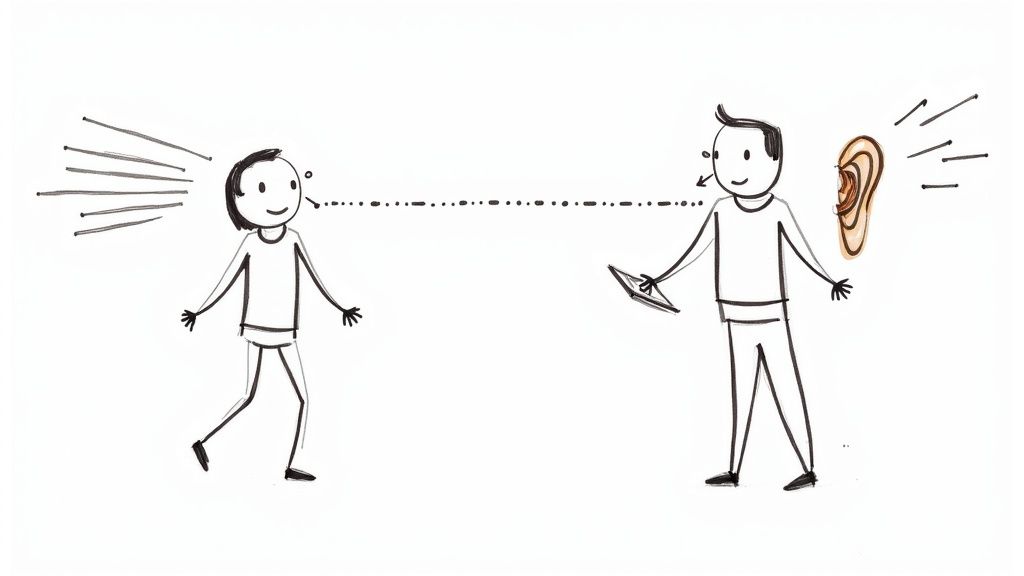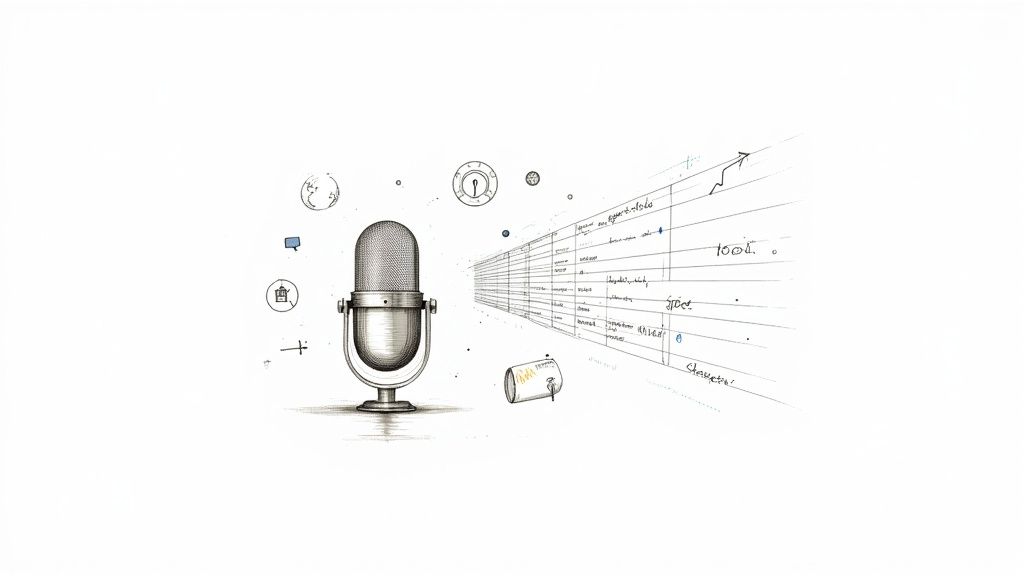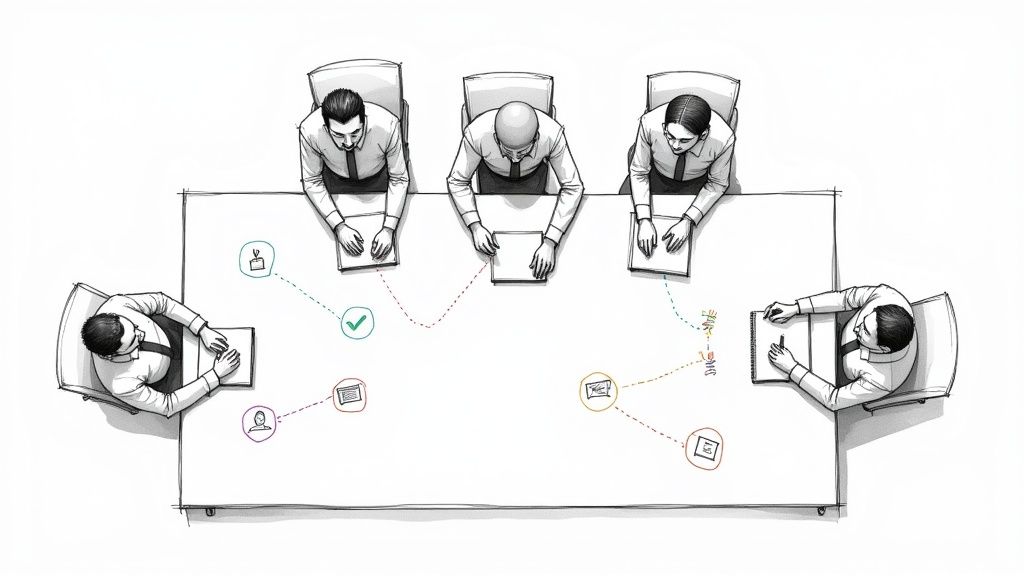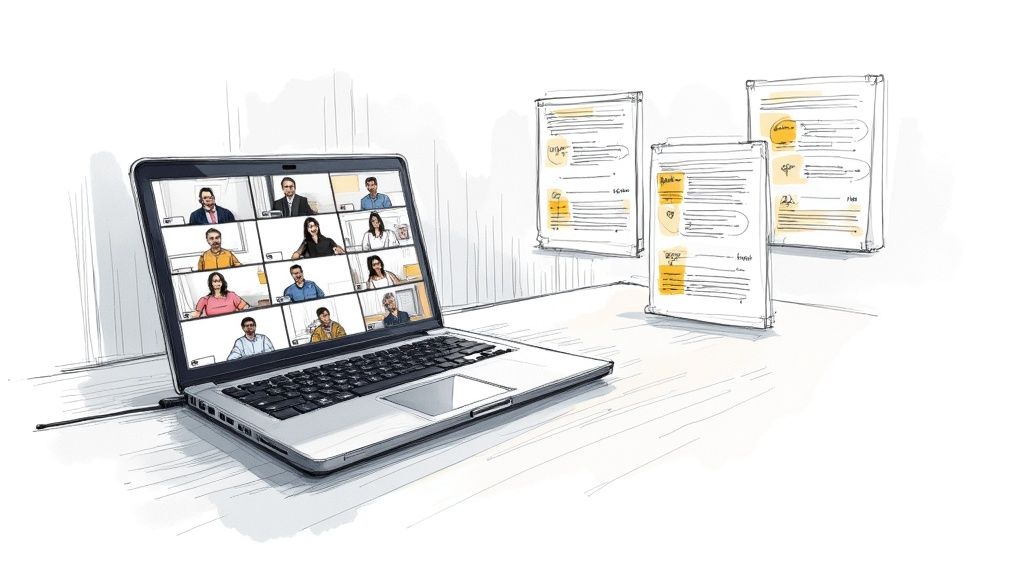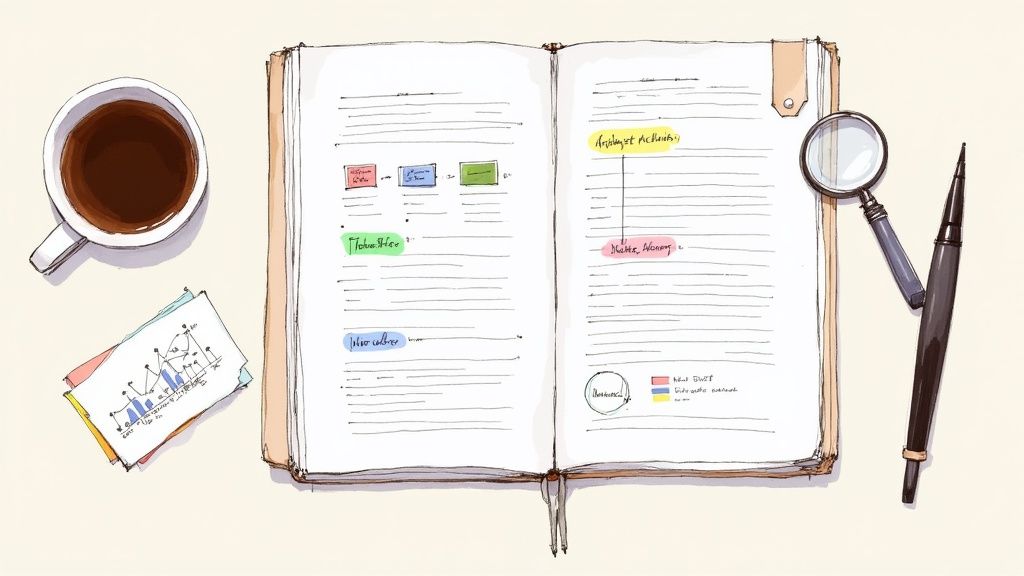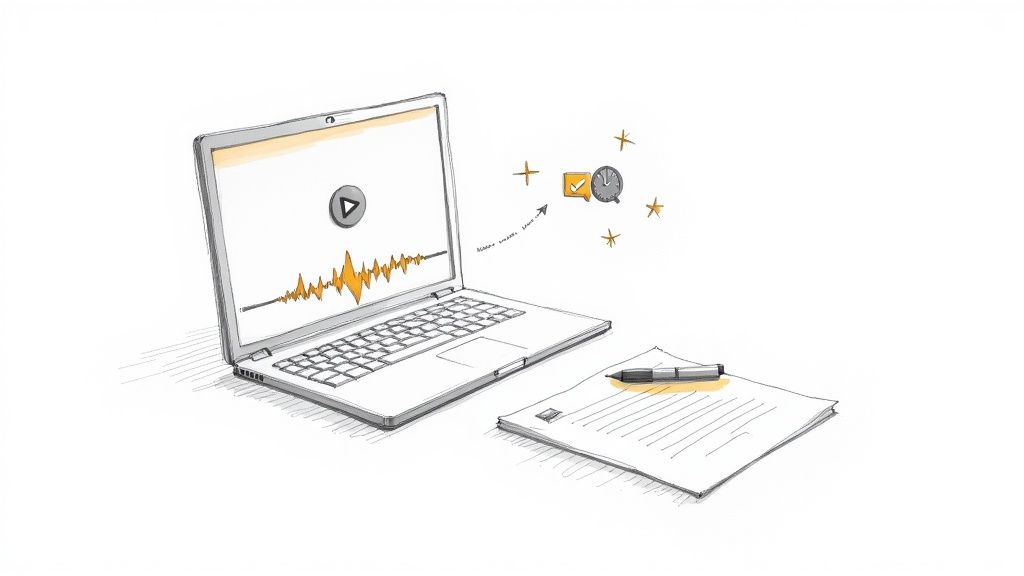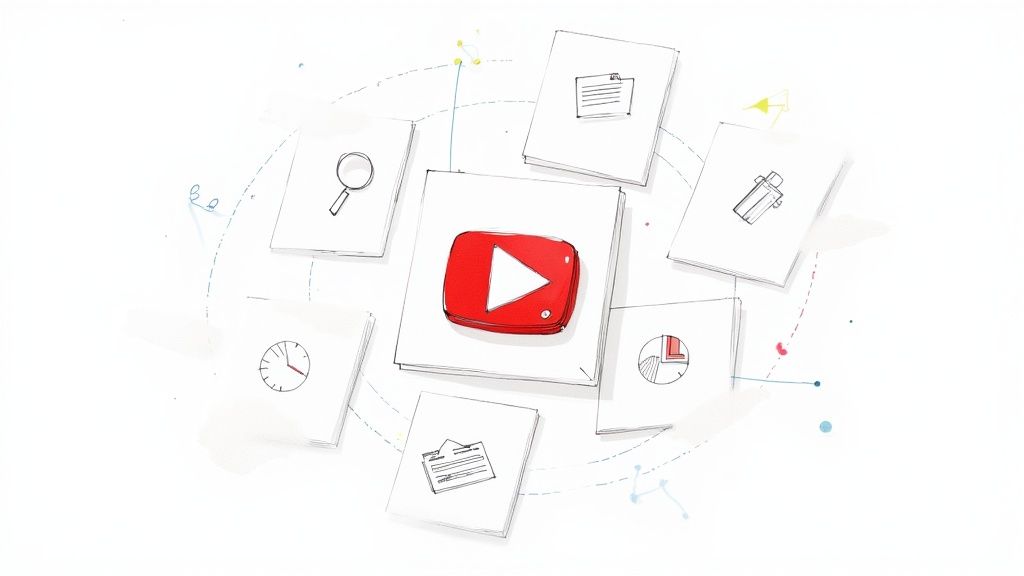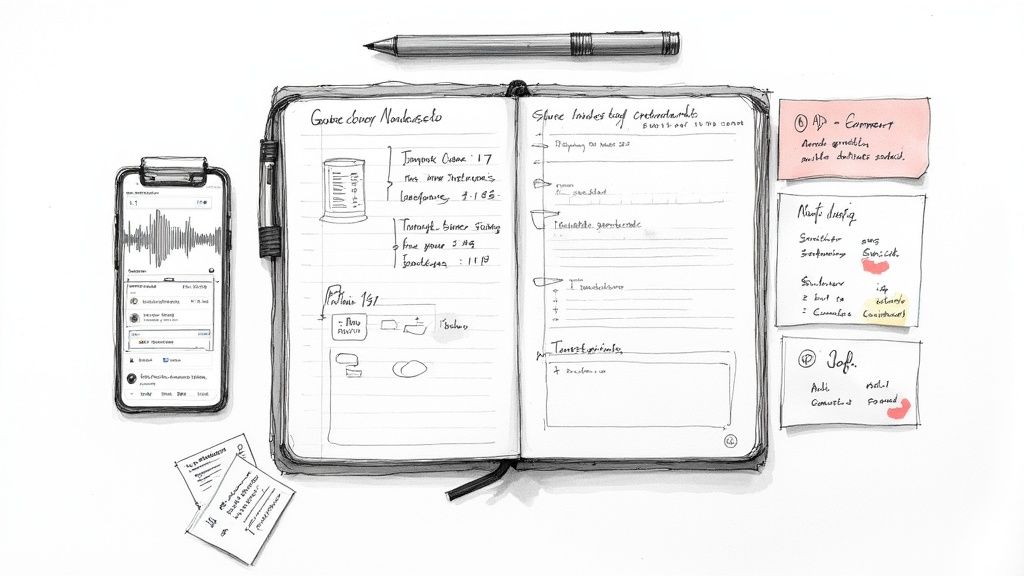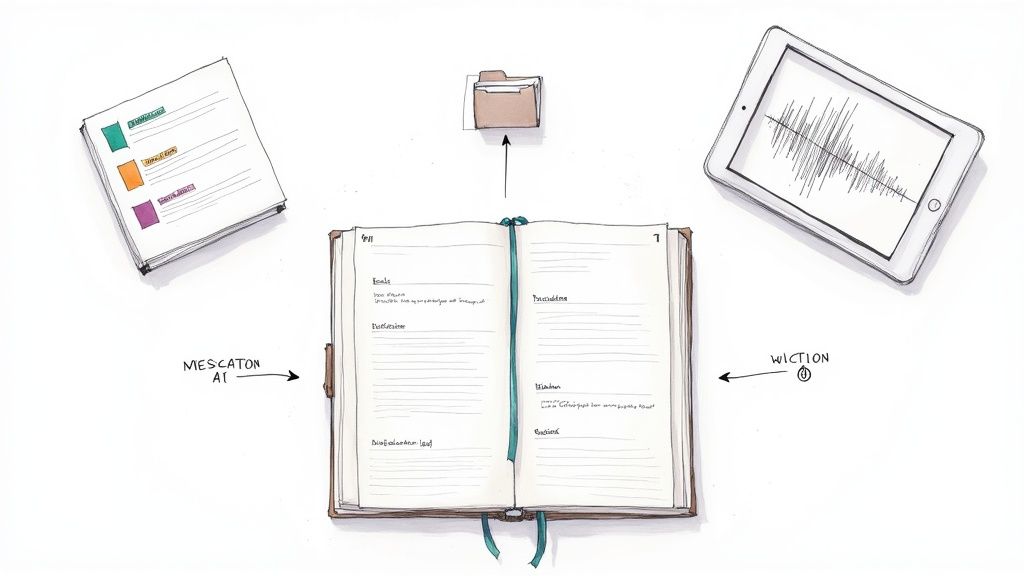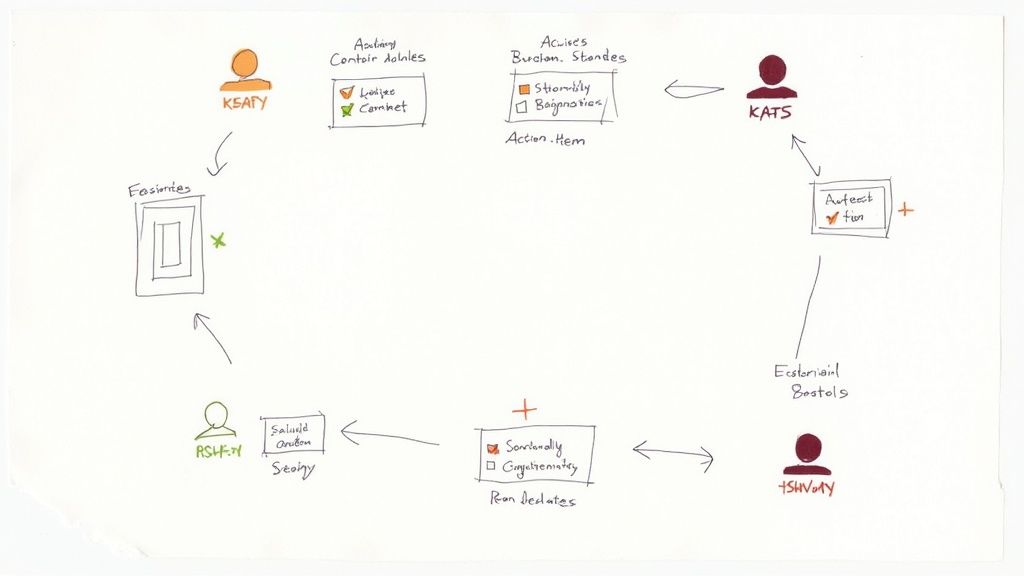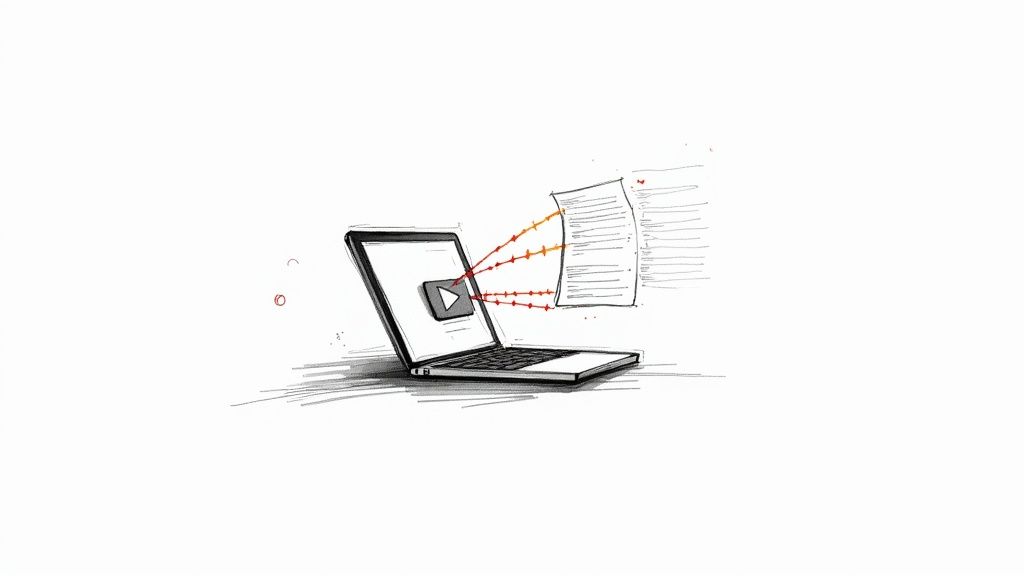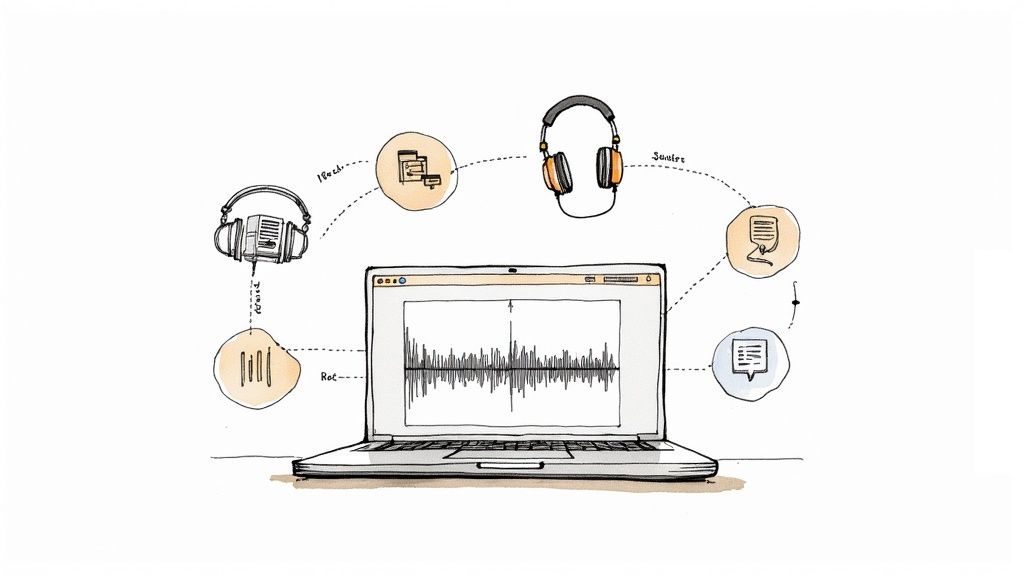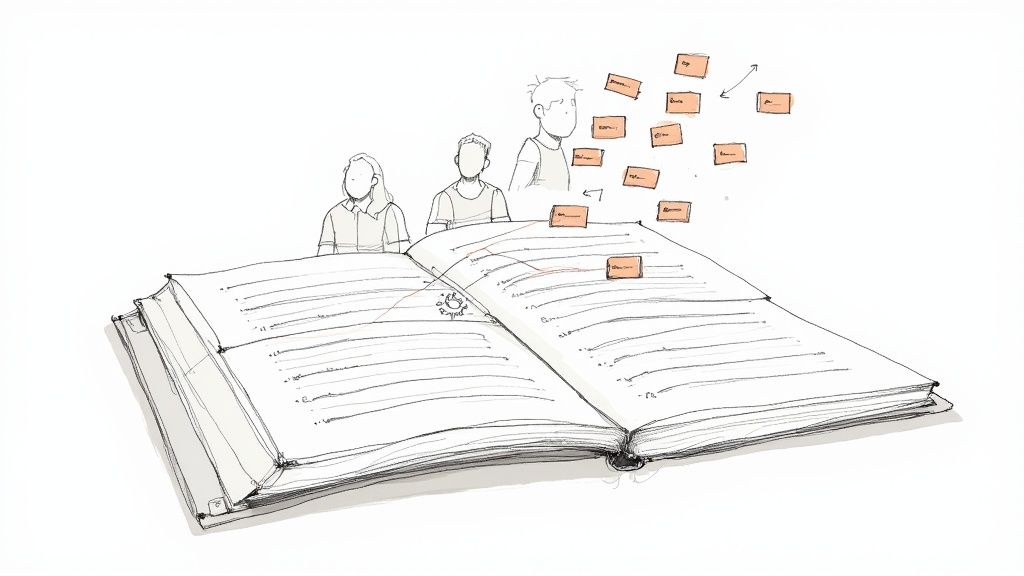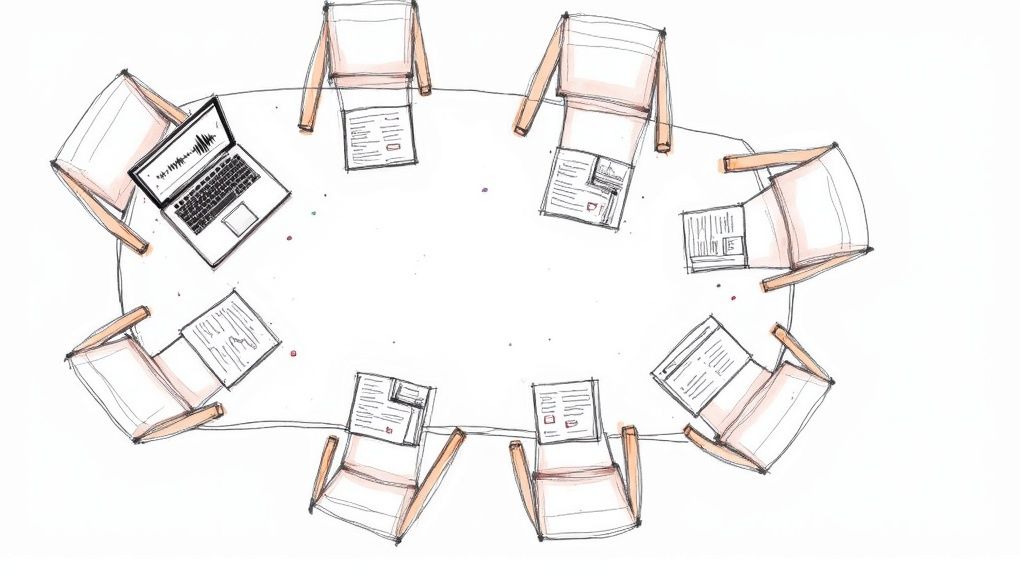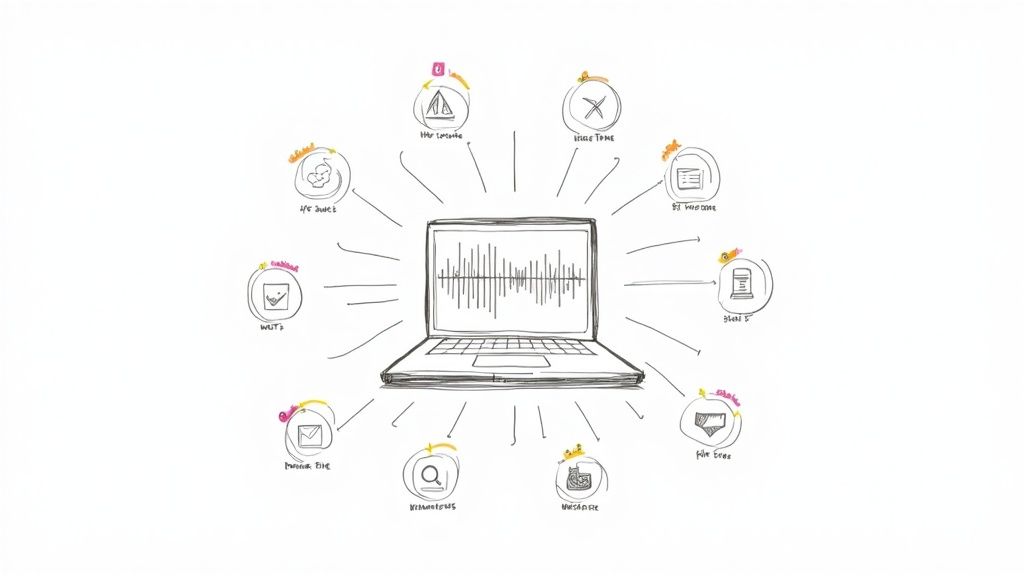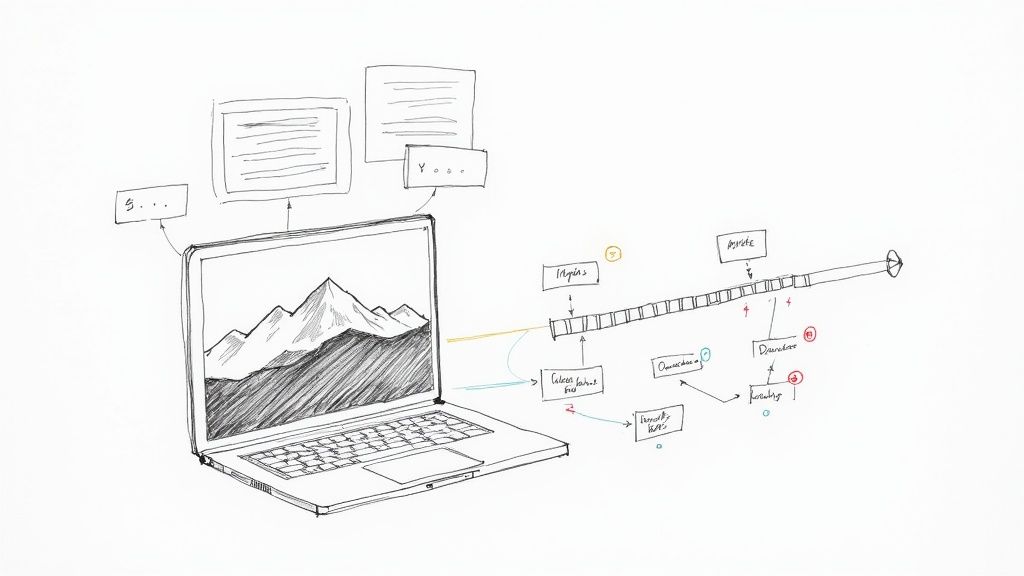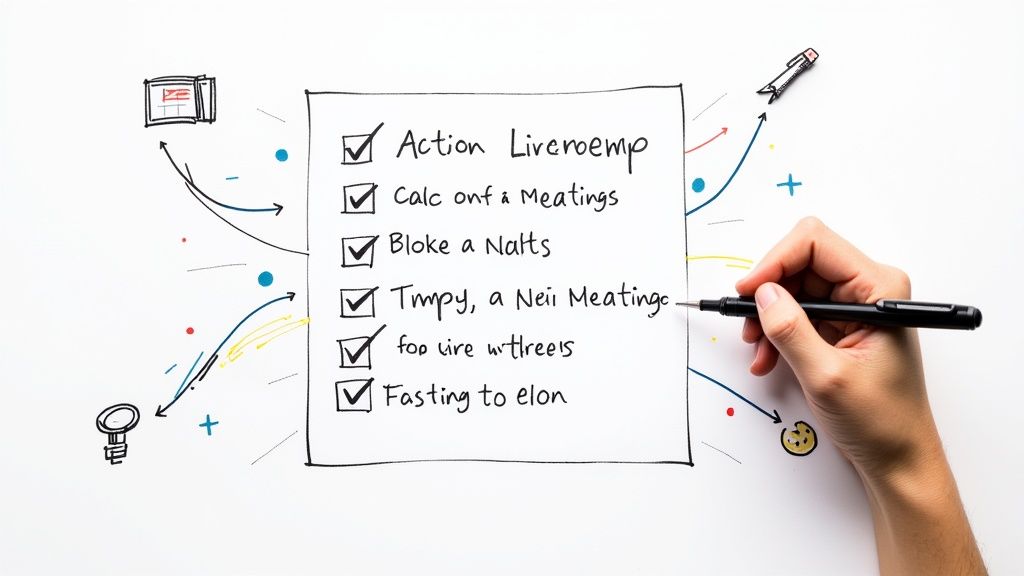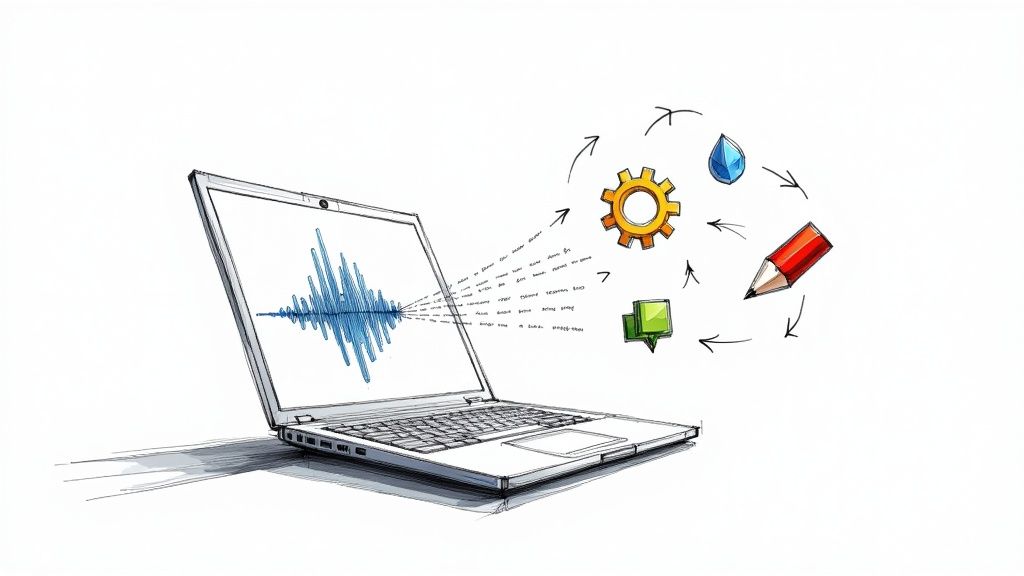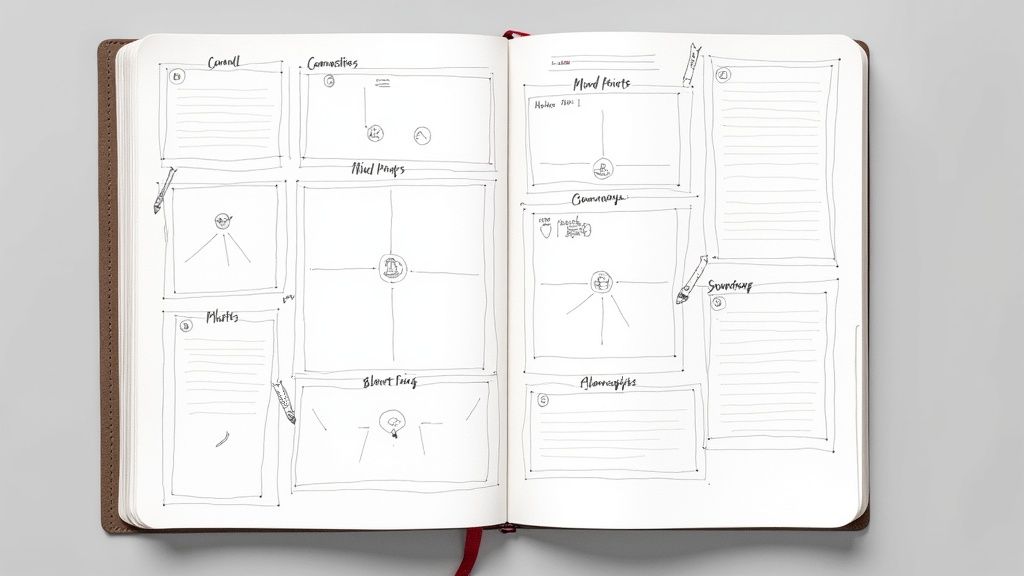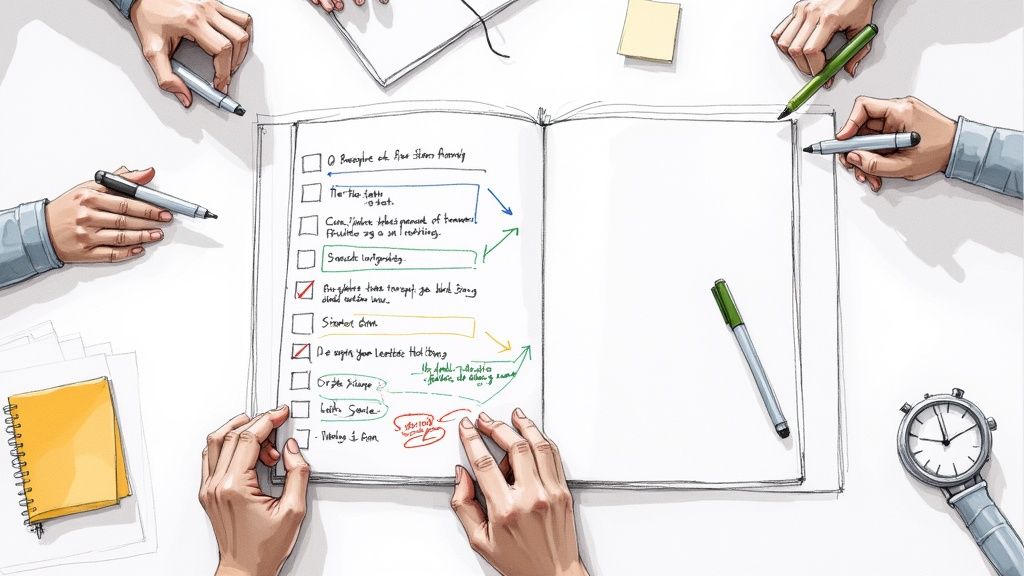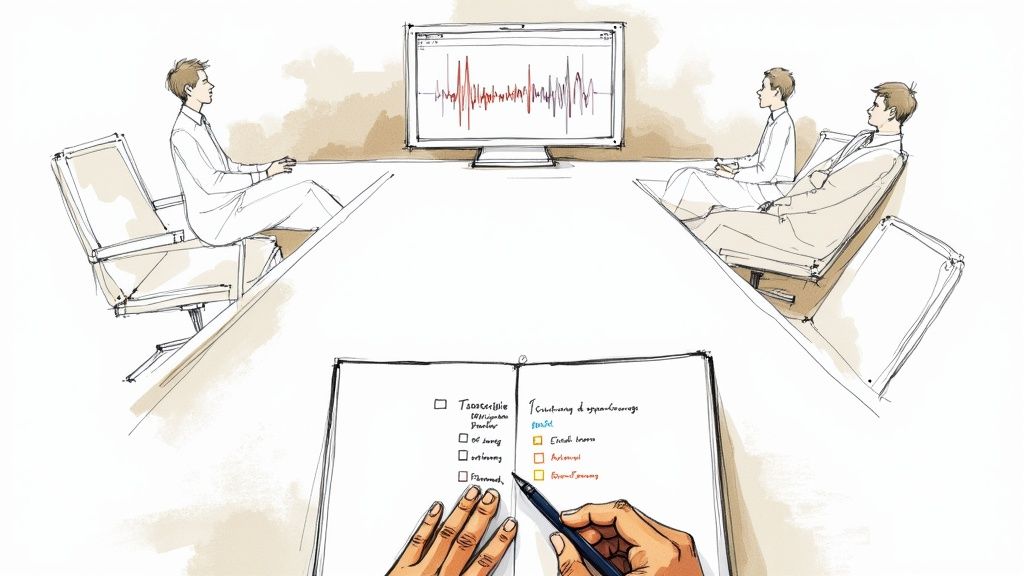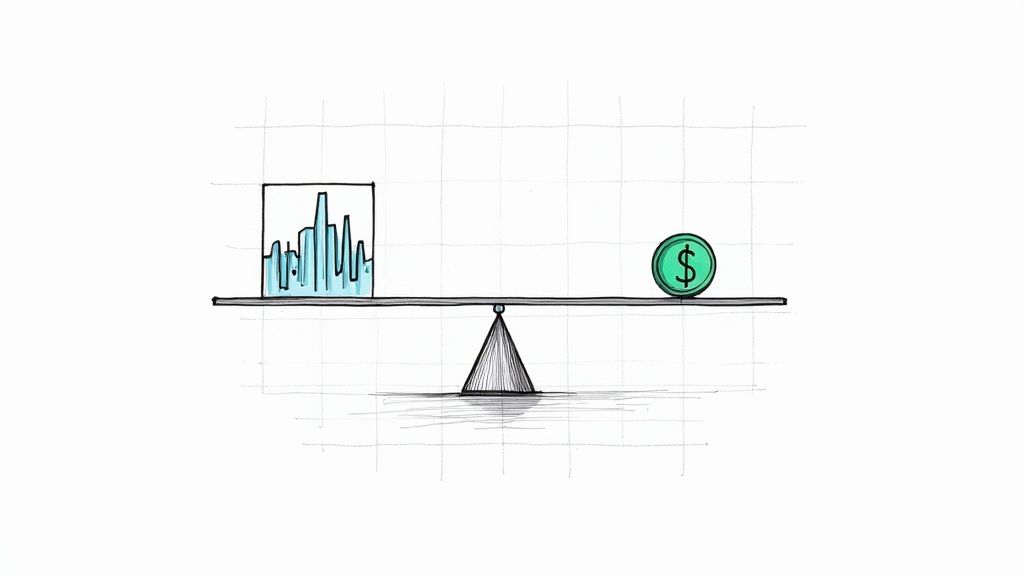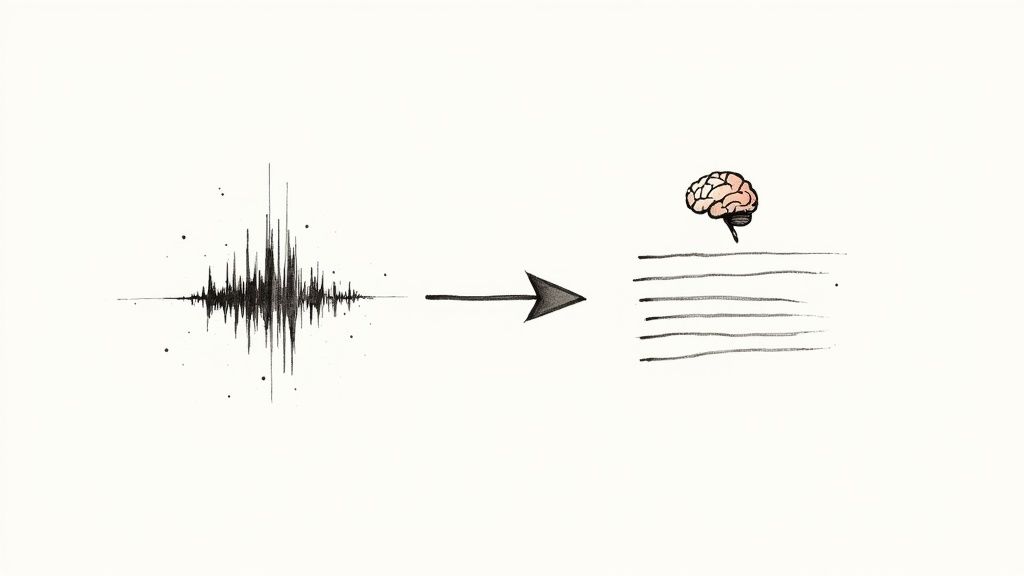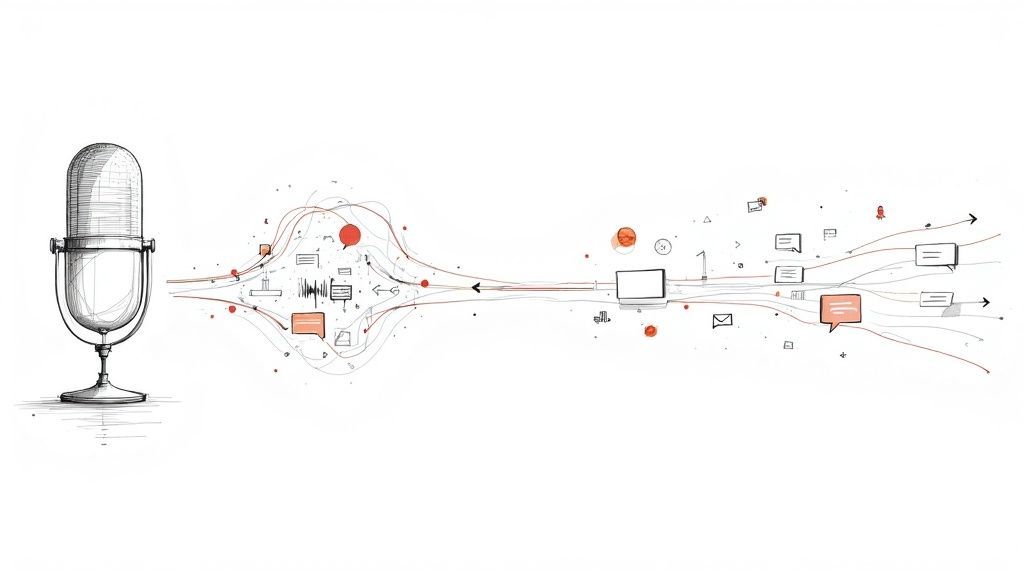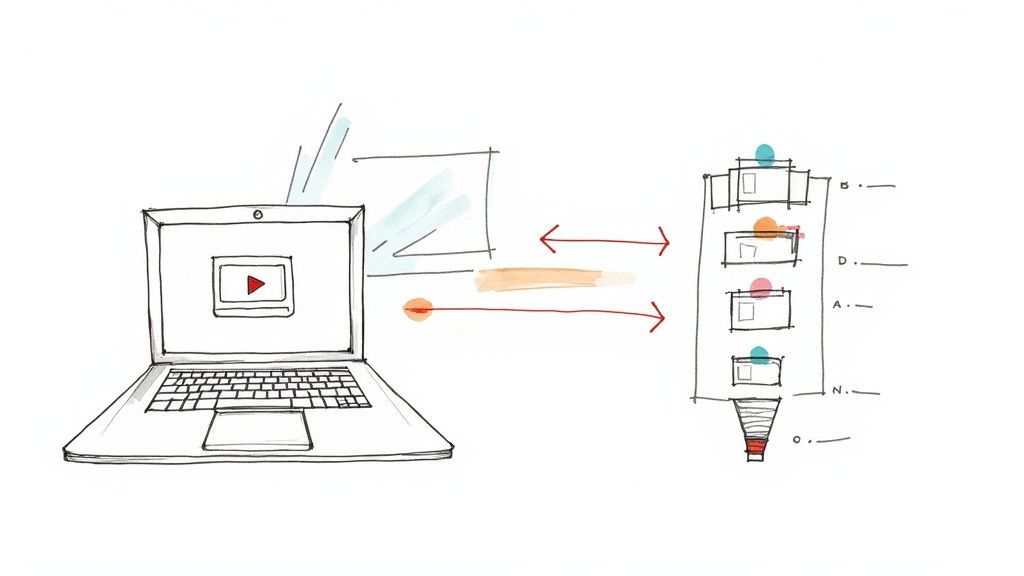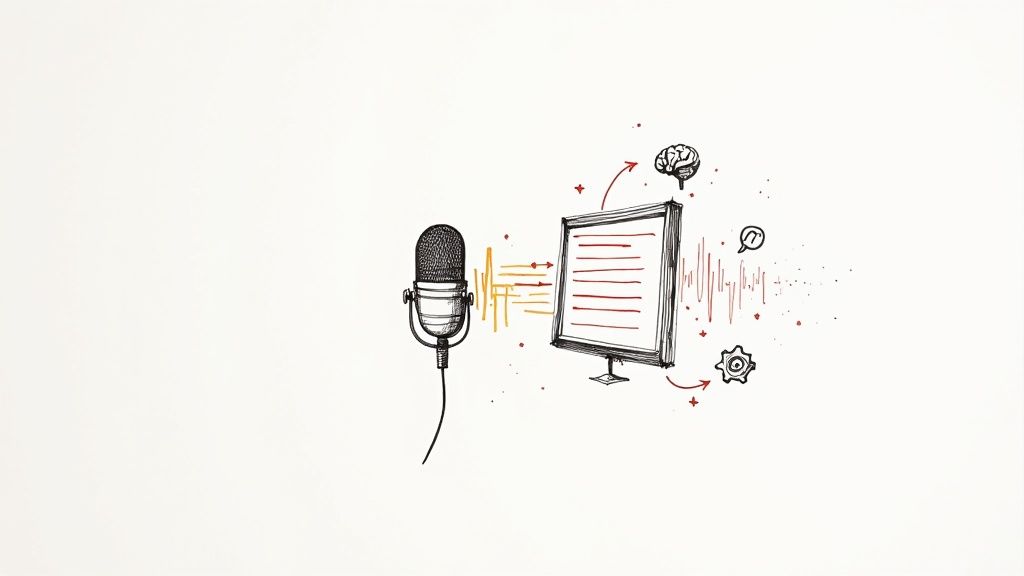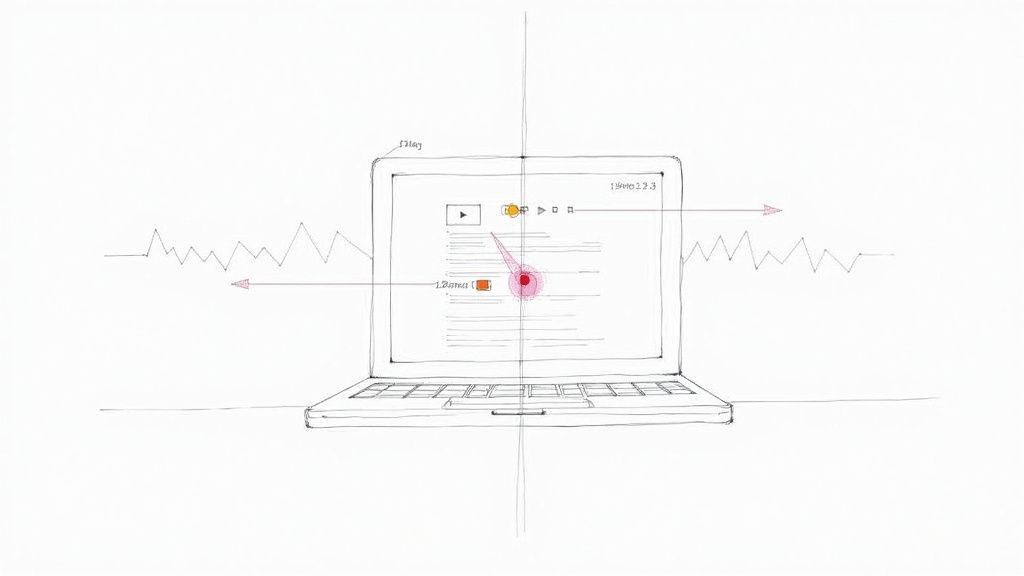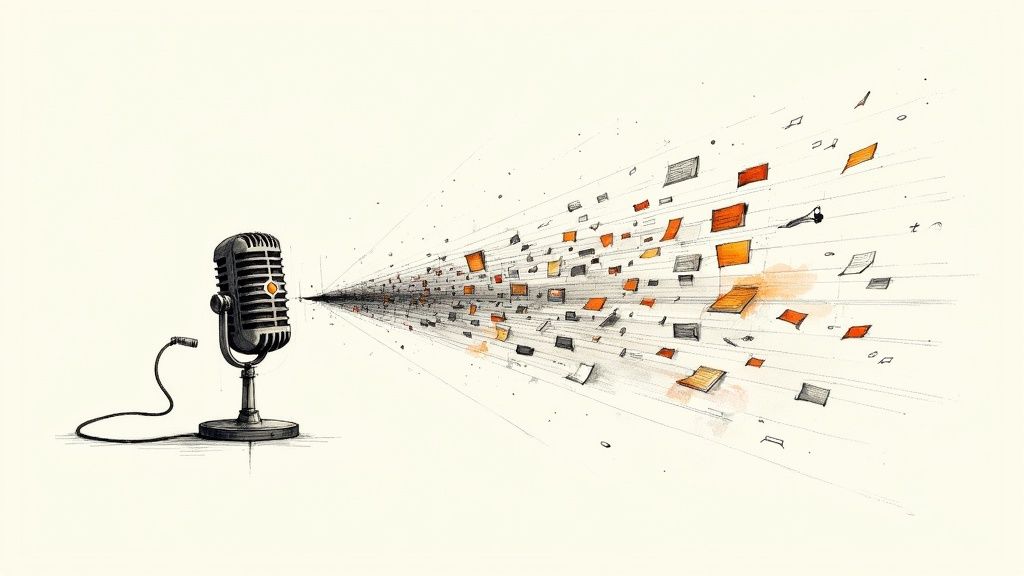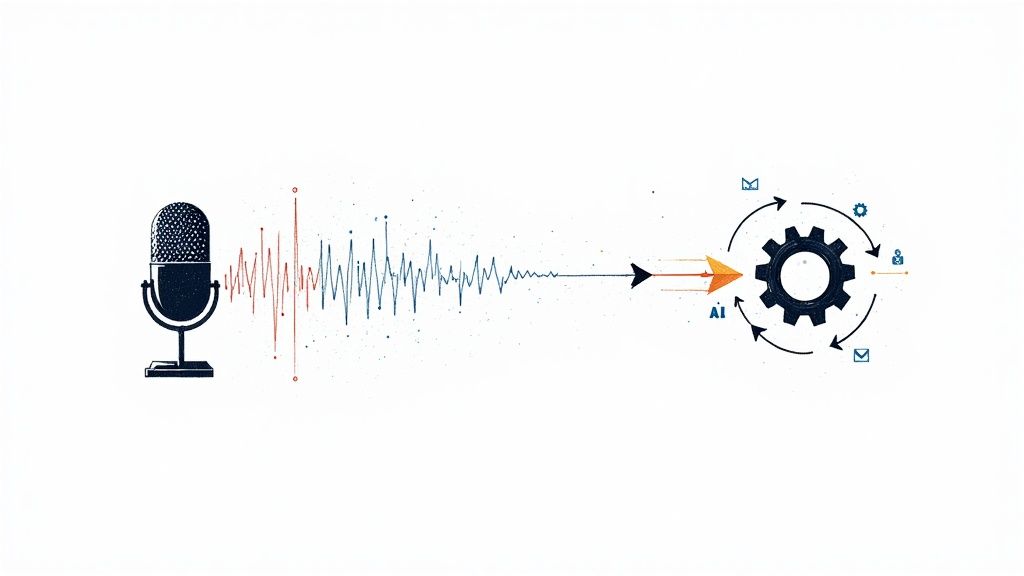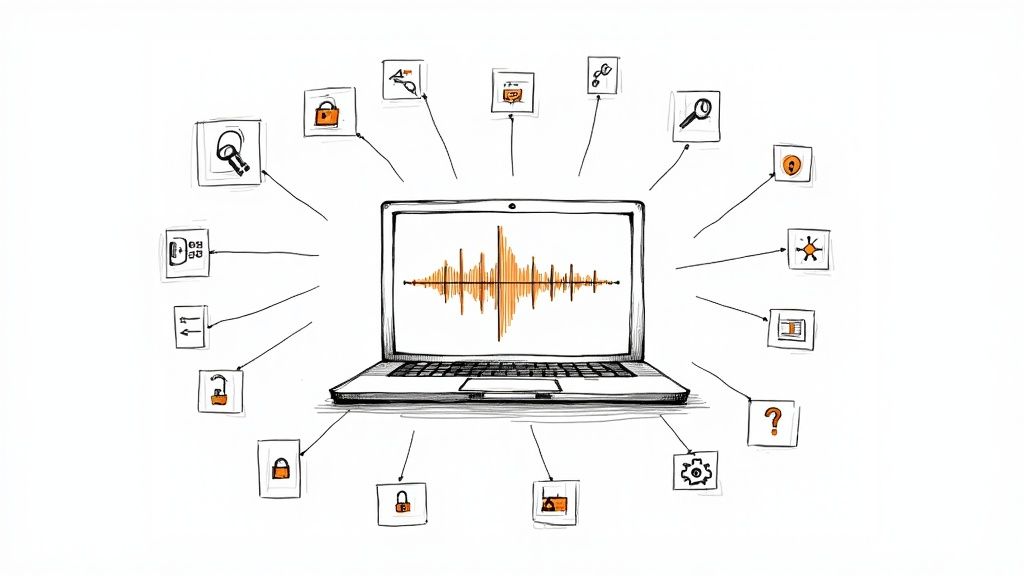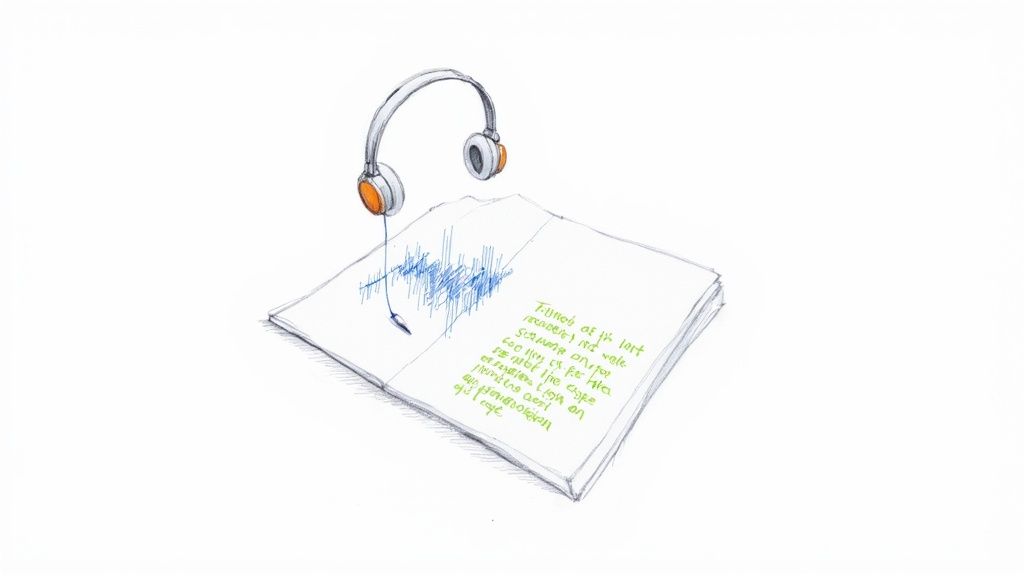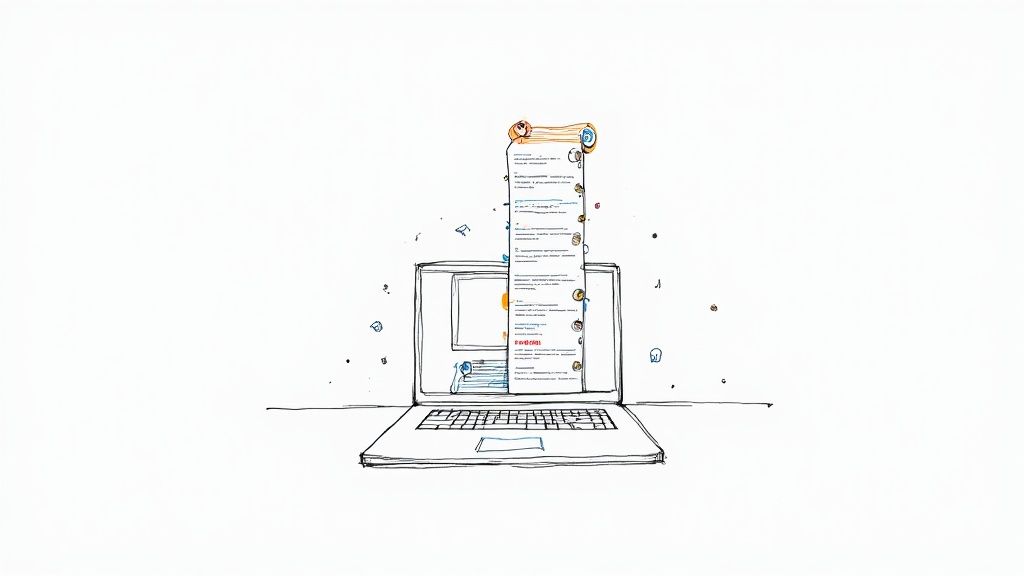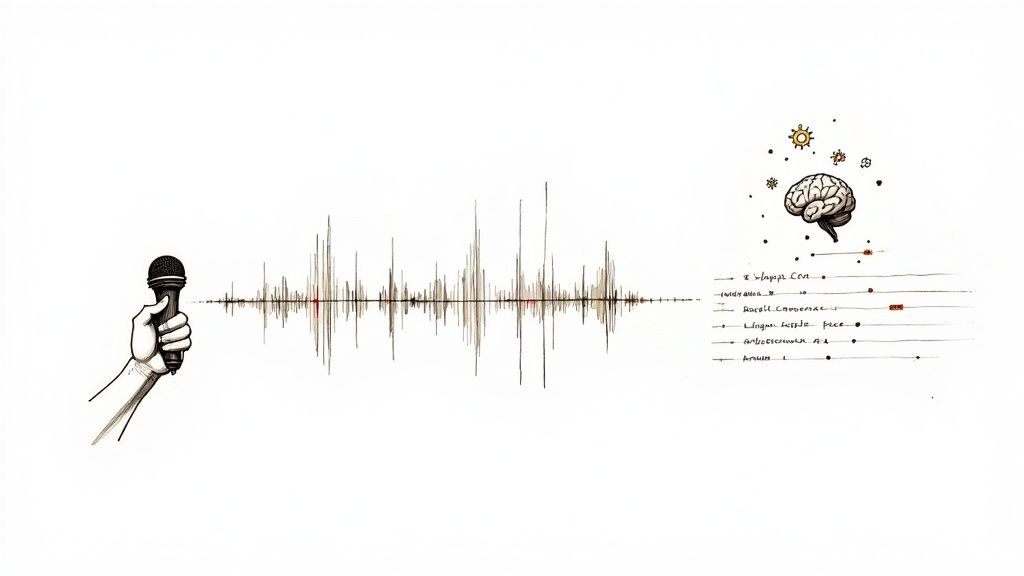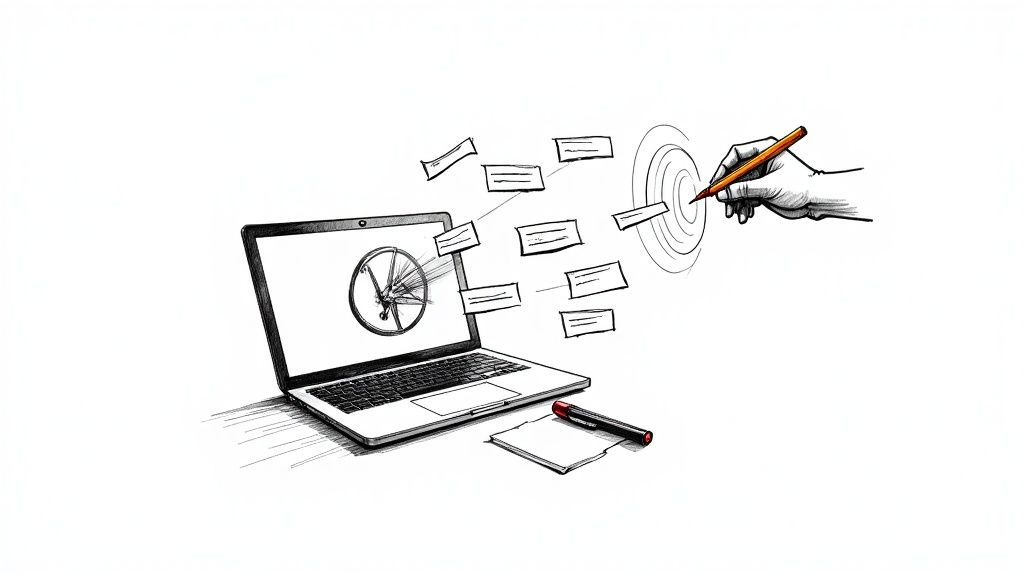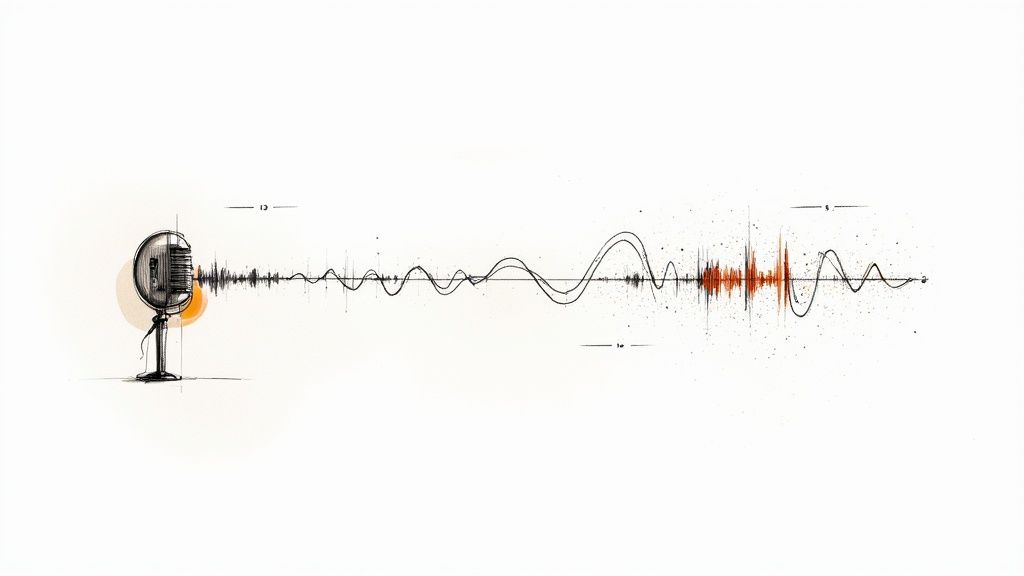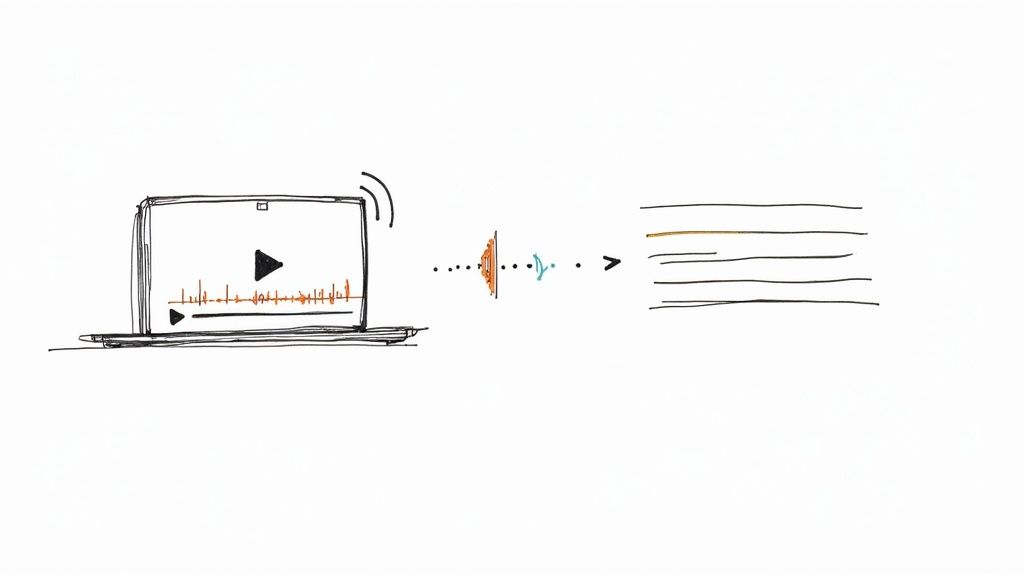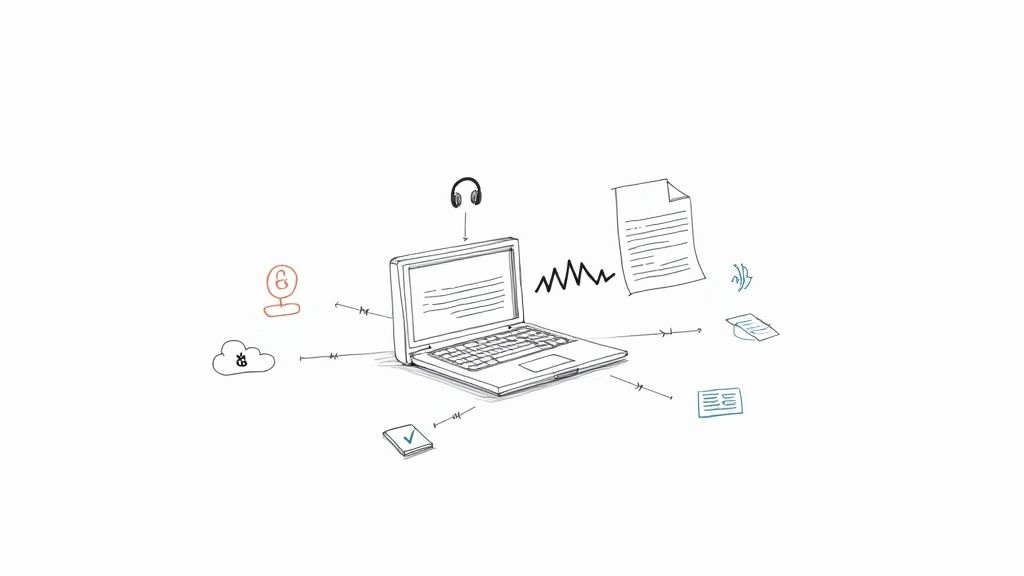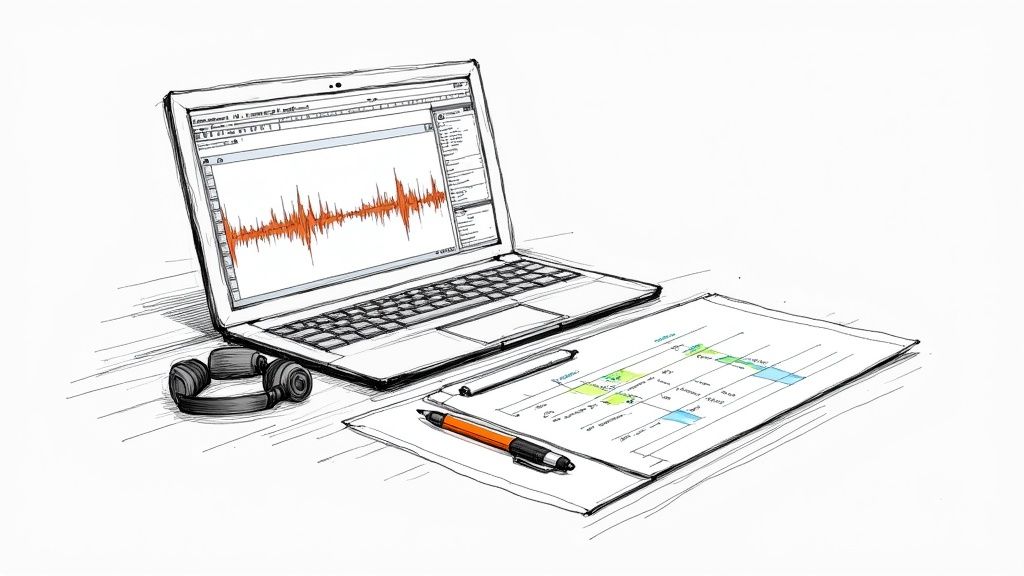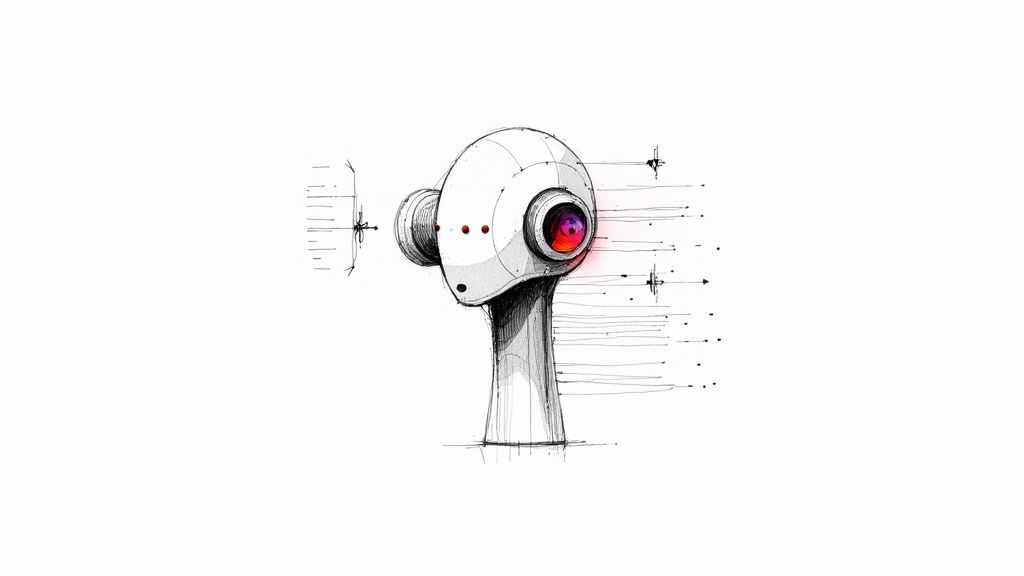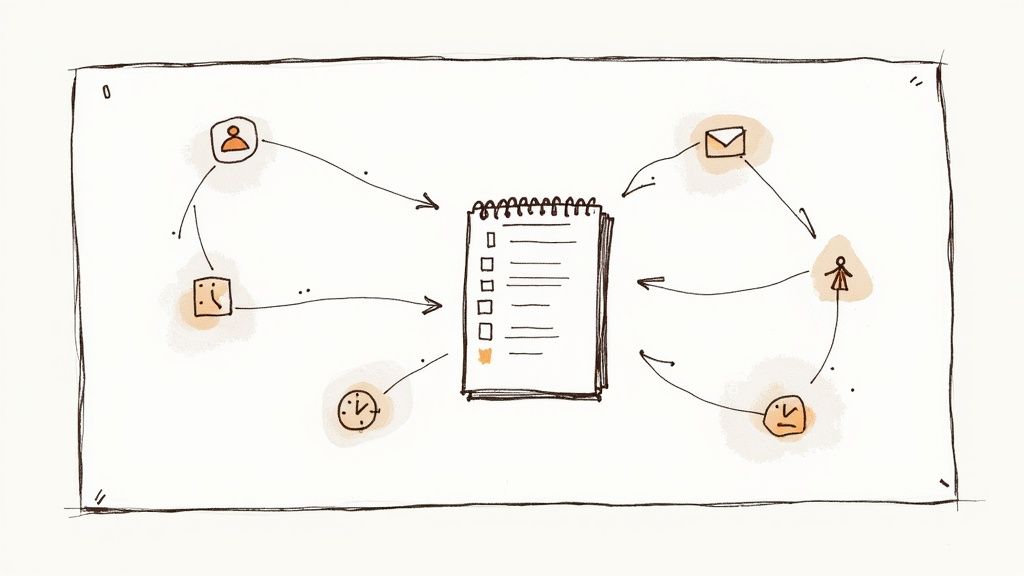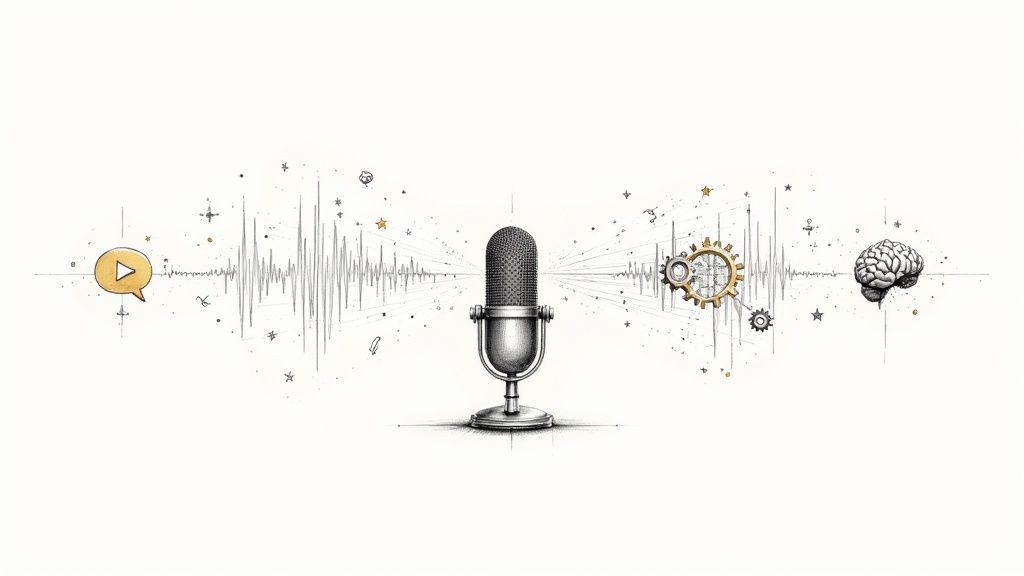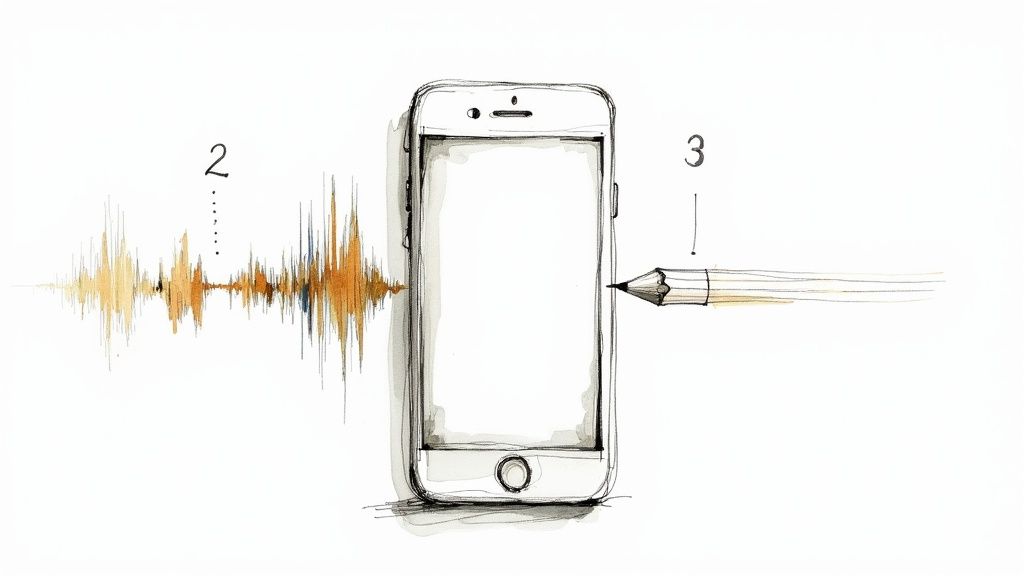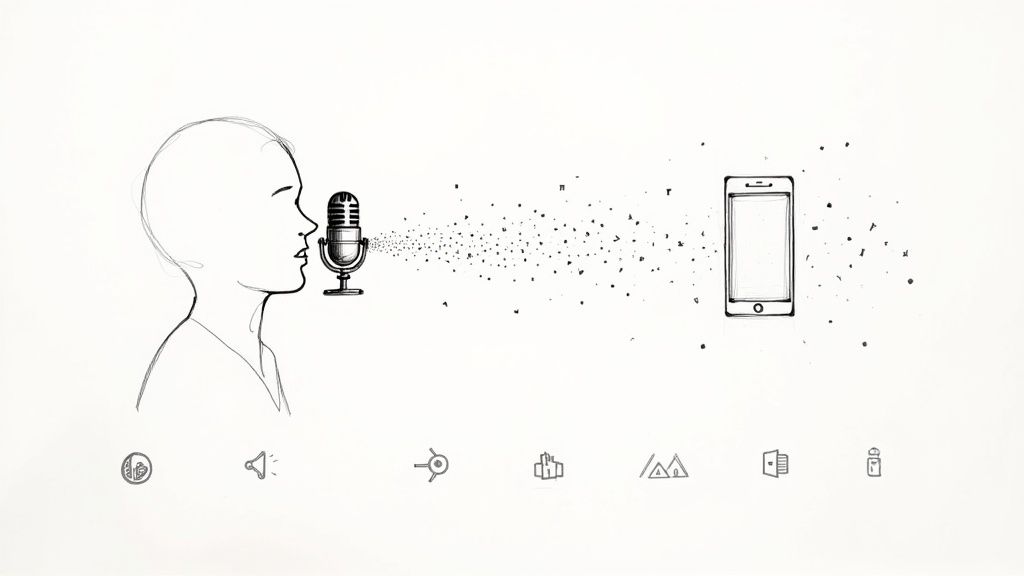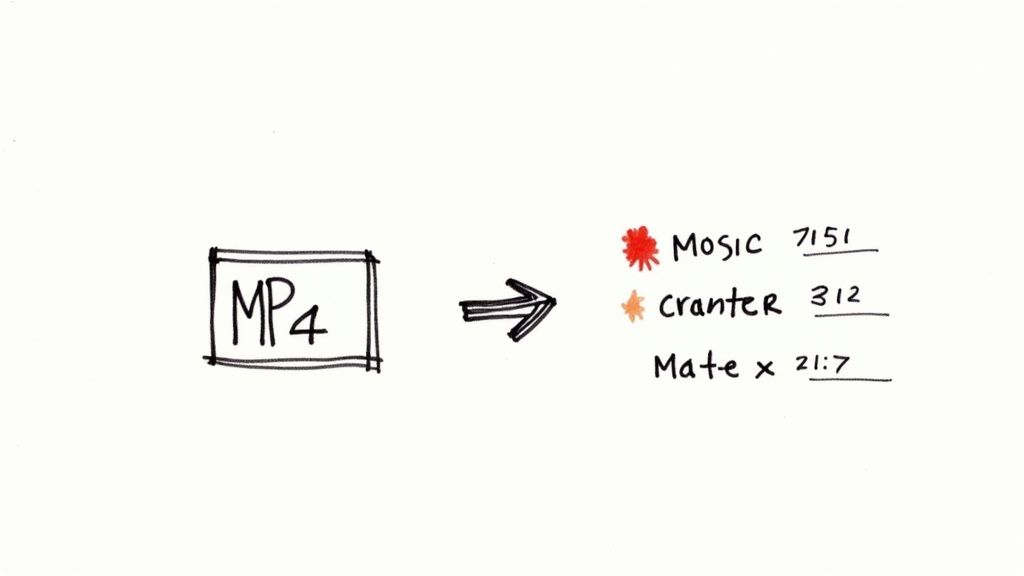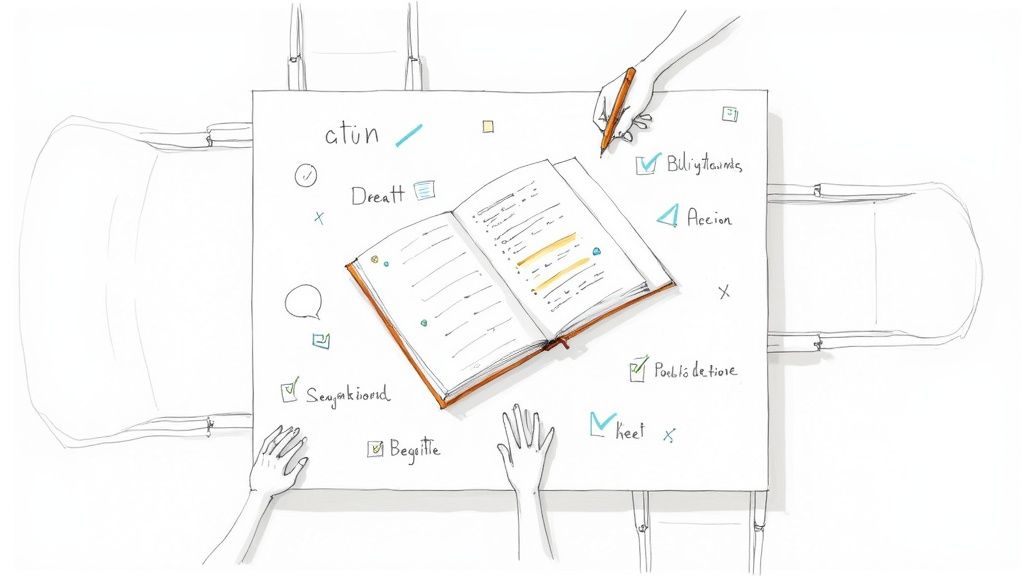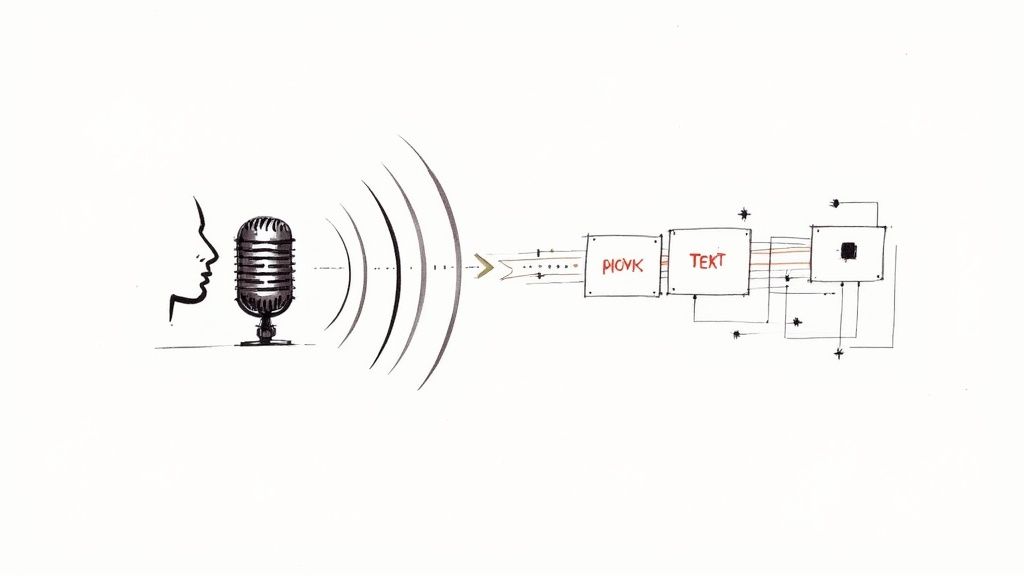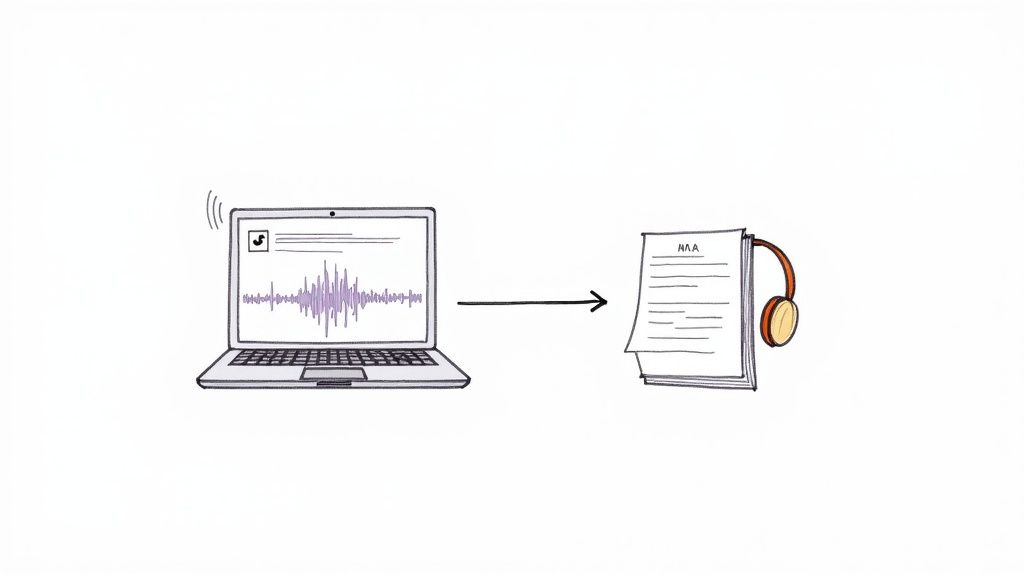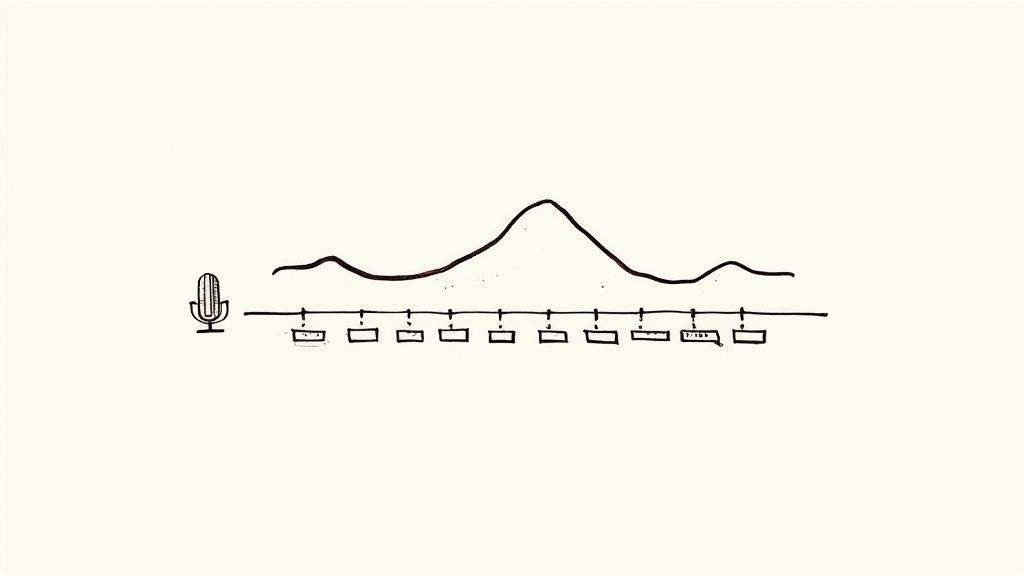
12 Best Note Taking Apps for Students and Professionals in 2025
In a world of constant information flow, a reliable digital notebook is essential for capturing ideas, organizing projects, and boosting productivity. But with countless options available, choosing the right one can feel overwhelming. This guide cuts through the noise. We've personally tested and analyzed the top contenders to bring you a comprehensive list of the best note taking apps available today.
Whether you're a student recording lectures, a professional managing meeting minutes, a researcher building a knowledge base, or a content creator scripting your next video, this article will help you find the perfect fit. We move beyond simple feature lists to offer real-world insights and experience-based recommendations tailored to your specific workflow. The right tool not only stores information but also transforms how you interact with it.
Our goal is to help you find an app that feels like a natural extension of your thinking process. While this article focuses on the tools themselves, understanding various effective note taking strategies can help you maximize the power of any digital notebook you choose.
In the detailed analysis below, you'll find a breakdown of each application's unique strengths, potential drawbacks, pricing, and ideal user scenarios. Each review includes screenshots and direct links, so you can easily explore and select the platform that will truly enhance your productivity and organization. Let's find the digital notebook that works for you.
1. Whisper AI: Best for Transcribing Audio & Video Notes
While not a traditional note-taking app in the sense of a blank canvas, Whisper AI earns its top spot by revolutionizing a critical, often-overlooked aspect of modern note-taking: capturing information from audio and video. It serves as an indispensable front-end tool for students, researchers, content creators, and professionals who need to convert spoken words into accurate, actionable text. Instead of spending hours manually transcribing lectures, interviews, or meetings, Whisper AI automates the entire process with remarkable precision.
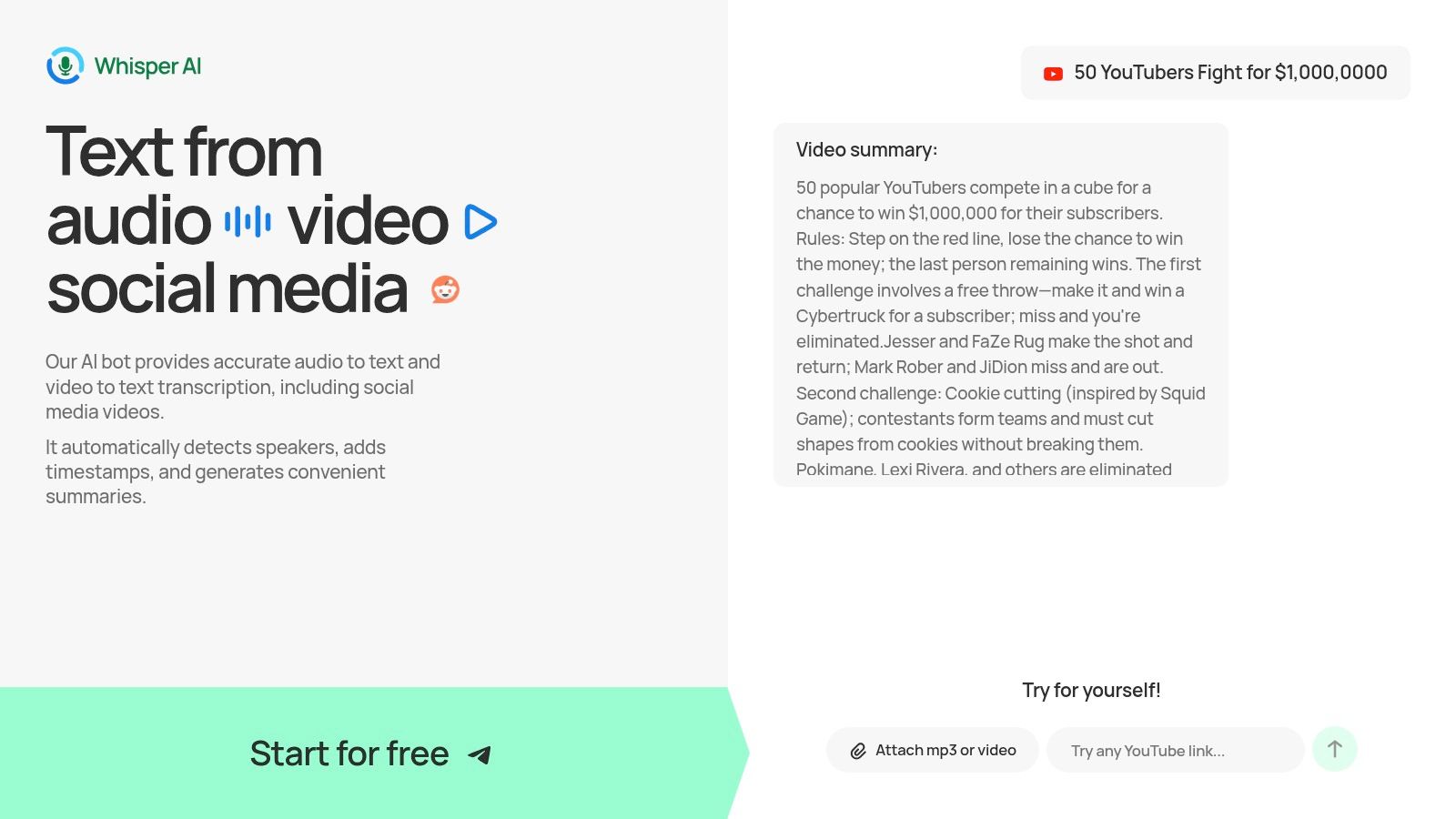
The platform’s power lies in its ability to ingest content from various sources, including direct file uploads and links from platforms like YouTube and Twitter. Within minutes, it delivers a full transcript complete with speaker labels and timestamps, transforming a passive listening experience into an active, searchable resource. This makes it one of the best note taking apps for anyone whose workflow begins with recorded media.
Standout Features & User Experience
Whisper AI’s interface is clean and purpose-built, focusing on a seamless transcription workflow. The true standout feature is its post-transcription toolkit. Users can interact with the generated text using an AI-powered Q&A, asking specific questions like "What were the key action items discussed?" or "Summarize the main argument." This elevates it from a simple transcription service to a powerful analytical tool.
- AI-Powered Summaries: Beyond a full transcript, the tool generates concise summaries and bullet-point highlights, perfect for quick reviews and sharing. This is a massive time-saver for digesting long-form content like podcasts or webinars. To see this in action, you can explore how it works as an AI podcast summarizer on whisperbot.ai.
- Multi-Language Support: With support for over 92 languages, it is an invaluable asset for global teams, journalists working with international sources, and multilingual students.
- Seamless Workflow Integration: Once processed, notes can be exported to Google Docs, Word, PDF, or SRT formats, allowing for easy integration into dedicated note organizers like Notion or Evernote.
Practical Use Cases and Limitations
For a student, this means turning a two-hour lecture into a fully searchable study guide. For a YouTuber or podcaster, it means generating accurate captions and show notes in a fraction of the time. However, it's crucial to understand its role. Whisper AI is not a note editor or an organizational hub; it's a specialized tool for content conversion. The accuracy, while excellent, is dependent on clear audio quality, and background noise can affect the output.
Website: https://whisperbot.ai
2. Apple App Store – The Best Note‑Taking Apps
For users entrenched in the Apple ecosystem, the best place to start your search for the best note-taking apps is Apple's own curated list. Rather than a single application, this is a hand-picked collection by Apple's editors, showcasing top-tier tools that are optimized for iPhone, iPad, and Mac. It serves as a trusted launchpad, bringing together heavyweights like Notability, Goodnotes, Bear, and Notion into one central, reliable location.
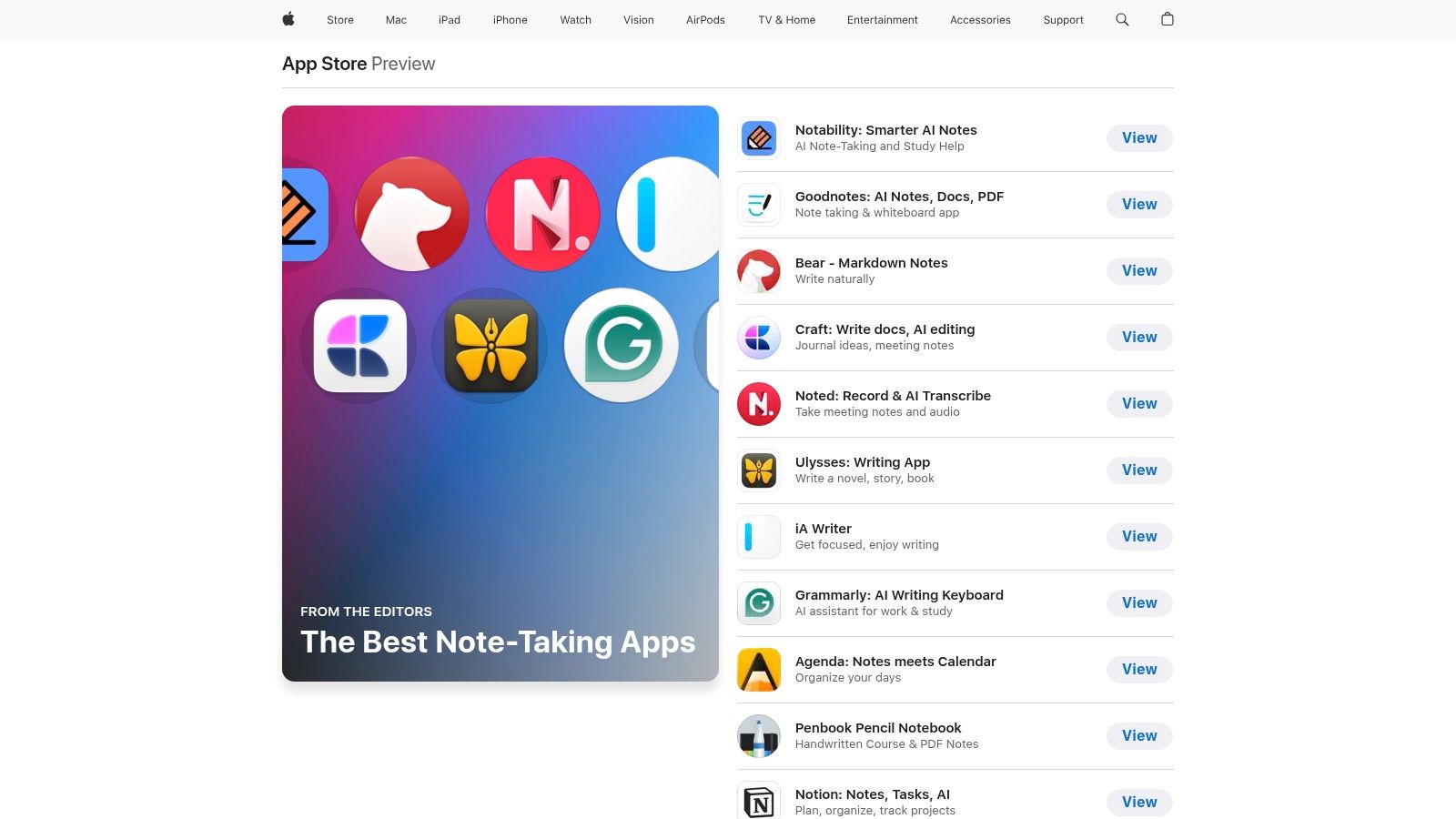
The platform’s main advantage is its high level of curation and trust. Every app is vetted for quality and security, and user reviews provide real-world insights into each app's performance. This simplifies the discovery process, allowing you to compare features and read editorial write-ups without leaving the App Store.
Key Considerations
The user experience is seamless, offering one-tap installations and secure purchases tied to your Apple ID. This integrated system also simplifies managing subscriptions and processing refunds, a significant benefit over dealing with individual developers.
However, its biggest strength is also its primary limitation: it's exclusive to Apple devices. Additionally, while the store provides a centralized view, pricing models vary widely from free apps with in-app purchases to premium one-time buys or recurring subscriptions.
- Ideal User: Anyone using an iPhone, iPad, or Mac looking for a vetted, high-quality selection of note-taking tools.
- Platform: iOS, iPadOS, macOS.
- Pricing: Varies by app; includes free, freemium, subscription, and one-time purchase models.
Website: Apple App Store – The Best Note‑Taking Apps
3. Google Play Store – Note‑taking apps
For Android users, the Google Play Store is the definitive starting point for discovering the best note-taking apps. As the official marketplace, it offers an immense catalog of options tailored to the Android operating system. It functions as a comprehensive hub where you can find everything from minimalist text editors to feature-rich digital notebooks like Evernote and OneNote, all in one place.
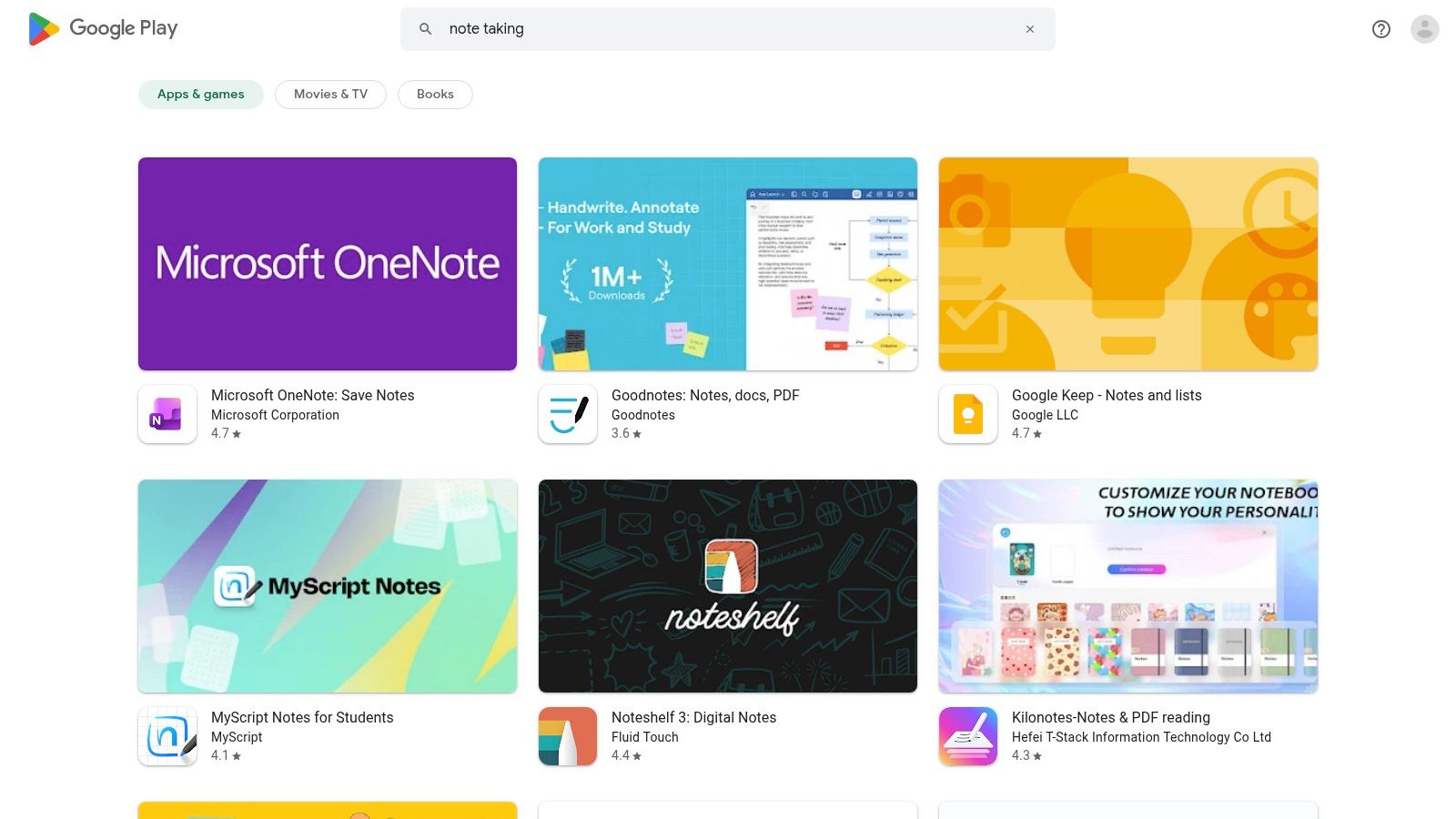
The platform's key advantage is its sheer volume and direct integration with the Android ecosystem. You can search, compare user reviews, check compatibility with your specific devices, and install apps with a single tap. Detailed app pages often include developer change logs and transparent pricing badges, giving you a clear picture of what to expect.
Key Considerations
The user experience is built for convenience, with your Google Account managing all purchases, subscriptions, and updates. This centralized system makes it easy to track spending and manage your app library across multiple devices. Many apps, like Notion, also offer advanced functionalities. For those looking to leverage cutting-edge features, a guide to mastering Notion AI can unlock powerful new ways to manage and create content within your workspace.
However, the vast selection can be a double-edged sword, as the quality between applications varies significantly. Many free apps are supported by ads or push in-app purchases, which can disrupt the user experience.
- Ideal User: Android device owners seeking the widest possible selection of note-taking apps, from popular mainstays to innovative new tools.
- Platform: Android.
- Pricing: Varies by app; includes free, freemium, ad-supported, subscription, and one-time purchase models.
Website: Google Play Store – Note‑taking apps
4. Microsoft OneNote
For those deeply integrated into the Microsoft ecosystem or seeking a powerful, free, and cross-platform solution, Microsoft OneNote is a standout choice. It mimics a digital three-ring binder, using a familiar notebook, section, and page hierarchy that is intuitive for organizing complex projects, class notes, or meeting minutes. Its free-form canvas allows you to type, draw, and insert audio or video anywhere on the page, offering unparalleled flexibility.
 unlock more storage and features.
Website: Microsoft OneNote
5. Evernote
Evernote is one of the original titans in the digital note-taking space, building a reputation as a powerful “second brain” for capturing everything. It excels at organizing vast amounts of information, from quick text notes and meeting minutes to scanned documents and web clippings. Its strength lies in a comprehensive feature set designed for both personal organization and professional collaboration, making it one of the most versatile note-taking apps available.
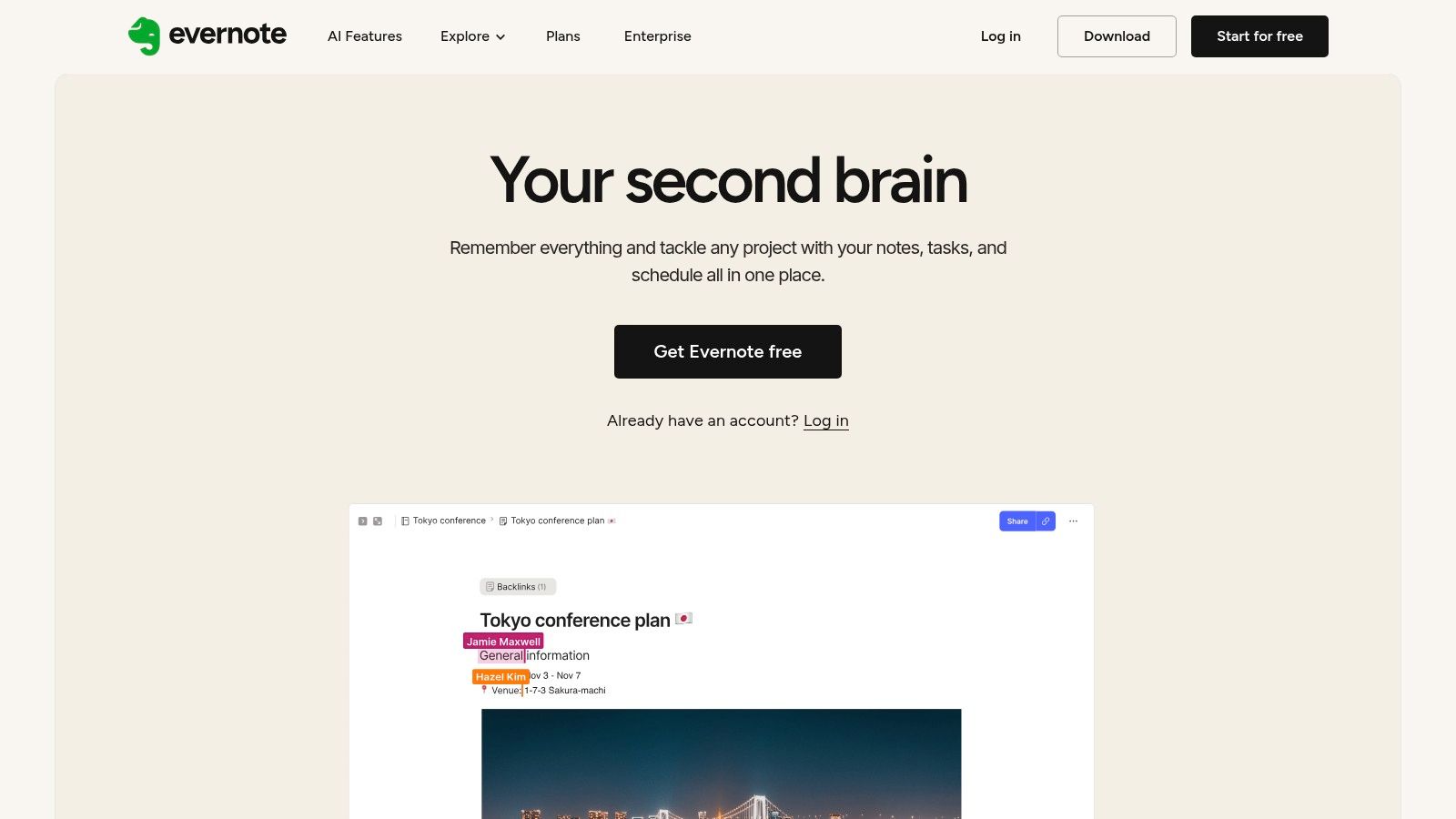
What truly sets Evernote apart is its robust ecosystem and enterprise-grade functionality. The Web Clipper browser extension is best-in-class for saving articles and webpages, while its powerful search can find text inside images and PDFs. The platform also integrates task management directly into notes, allowing users to create checklists and set reminders, bridging the gap between information capture and actionable productivity.
Key Considerations
The user experience is mature and feature-rich, available on virtually every platform, ensuring seamless syncing across devices. This cross-platform availability makes it a reliable choice for users who switch between Windows, macOS, Android, and iOS. Its rich text editor supports diverse attachments, making notes more than just text.
However, recent changes to its pricing and free tier have made it less accessible. The free plan is now heavily restricted to just 50 notes and a single notebook, pushing most users toward a paid subscription. The paid plans are also relatively expensive compared to many modern competitors.
- Ideal User: Professionals, researchers, and long-term users who need a powerful, cross-platform system for archiving and organizing large volumes of diverse information.
- Platform: Windows, macOS, iOS, Android, Web.
- Pricing: Free plan is very limited. Paid plans start at $14.99/month for Personal and $18.99/month for Professional.
Website: https://evernote.com/
6. Notion
Notion transcends the traditional definition of a note-taking app, positioning itself as an all-in-one workspace for notes, tasks, wikis, and databases. Its unique, block-based system allows users to construct pages with unparalleled flexibility, combining text, to-do lists, images, databases, and over 50 other content types. This modularity makes it one of the best note taking apps for building interconnected knowledge bases, project management dashboards, or simple personal journals.
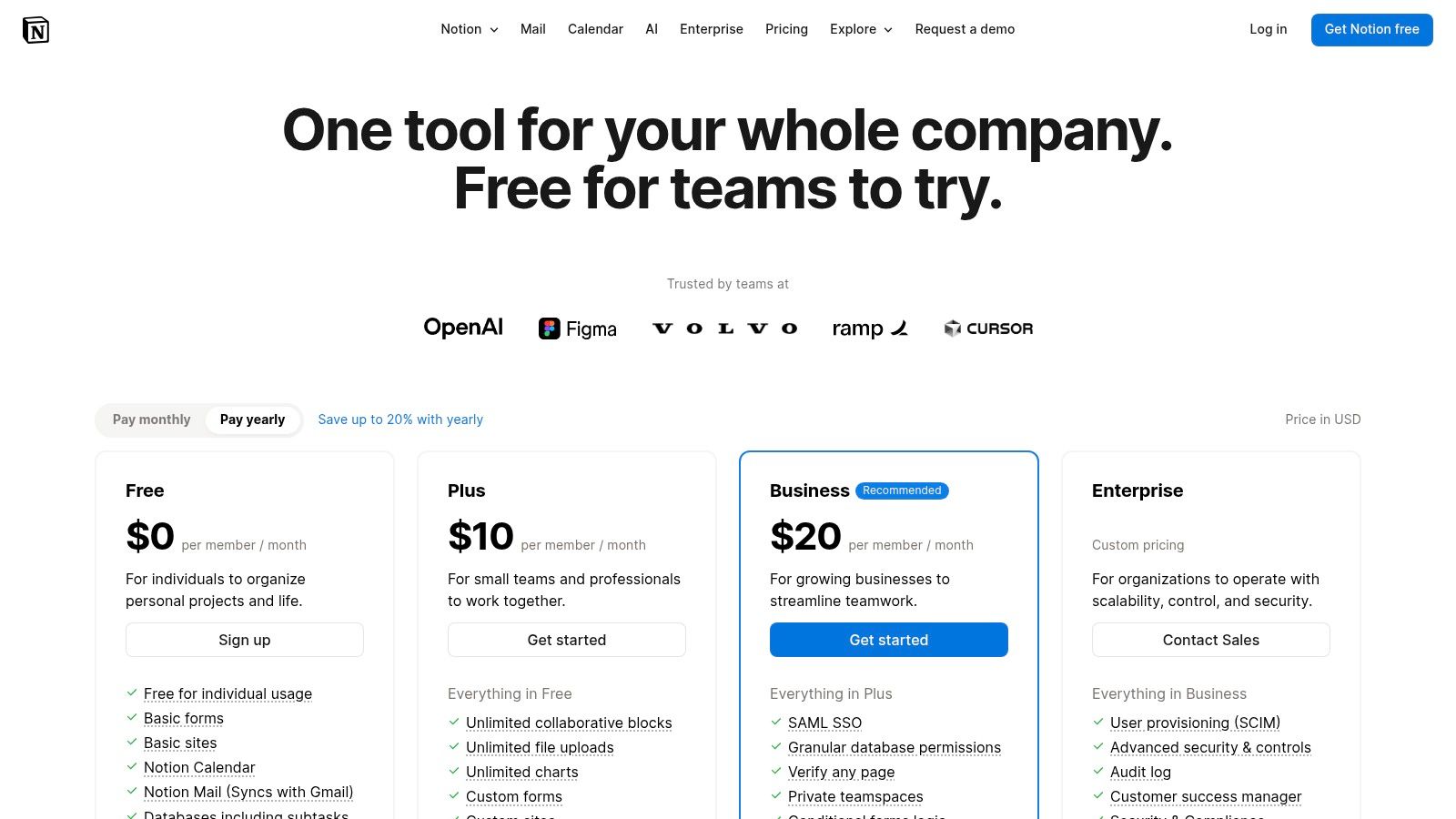
The platform's main advantage is its extreme customizability, which allows it to adapt to nearly any workflow, from a student’s class schedule to a corporate team’s content calendar. Real-time collaboration is built-in, enabling seamless sharing and editing among team members. The recent addition of optional AI features further enhances productivity by assisting with summarizing, writing, and brainstorming directly within your notes.
Key Considerations
Notion’s power comes with a steeper learning curve compared to simpler apps. New users may feel overwhelmed by the sheer number of possibilities, but the platform offers extensive templates and clear documentation to ease the onboarding process. While its offline capabilities have improved, they are not as robust as some dedicated offline-first tools, which can be a limitation for users who frequently work without an internet connection.
The free plan is exceptionally generous for individual users, and special discounts are available for students and educators, making it highly accessible. Paid plans unlock advanced features like version history, enhanced security, and unlimited team collaboration.
- Ideal User: Individuals, students, and teams who need a highly customizable, all-in-one workspace for notes, project management, and knowledge sharing.
- Platform: Web, macOS, Windows, iOS, Android.
- Pricing: Free for personal use; paid plans start at $8 per user/month for teams.
Website: Notion
7. Obsidian
Obsidian is less of a simple note-taking app and more of a powerful, local-first knowledge base that works on plain text Markdown files. It's designed for building a "second brain," allowing you to create a dense network of linked notes. This makes it one of the best note taking apps for researchers, writers, and anyone implementing systems like Zettelkasten to connect ideas and uncover new insights from their knowledge.
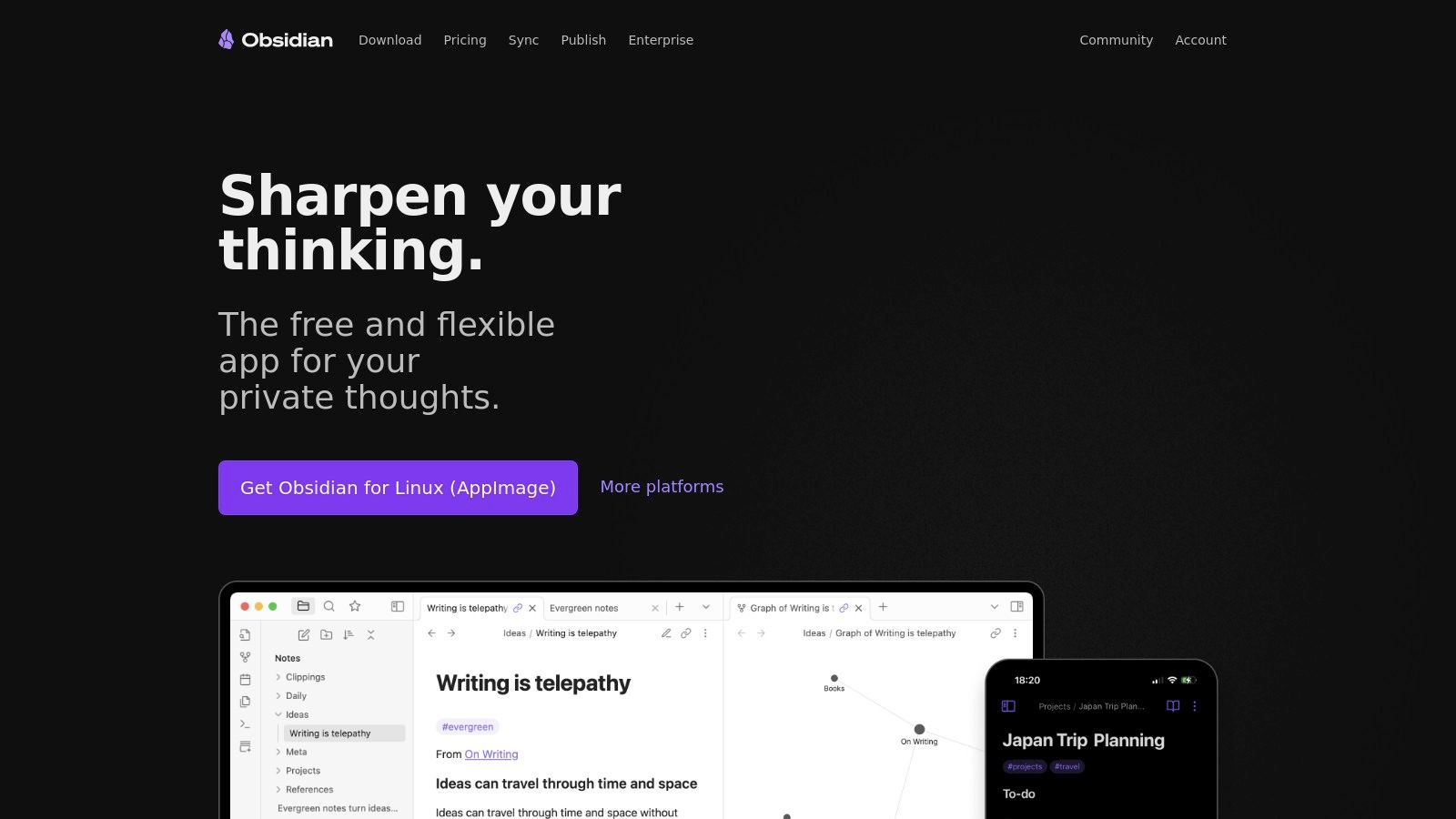
The platform's core strength lies in its offline-first philosophy and data ownership. Your notes are stored locally on your device in standard Markdown files, ensuring privacy and accessibility without an internet connection. Its bidirectional linking and interactive graph view let you visually explore the relationships between your notes, transforming a simple collection of documents into a dynamic web of knowledge.
Key Considerations
Obsidian's true power is unlocked through its extensive ecosystem of community-developed plugins and themes. You can customize the application to do almost anything, from creating Kanban boards and calendars to integrating with Zotero for academic research. This flexibility allows you to tailor the tool precisely to your workflow.
However, this customization comes with a steeper learning curve compared to more straightforward apps. New users may feel overwhelmed by the setup and plugin options. While the core application is free for personal use, features like end-to-end encrypted sync and web publishing are available as paid add-on services.
- Ideal User: Academics, researchers, writers, and thinkers who want to build a long-term, interconnected personal knowledge base.
- Platform: Windows, macOS, Linux, iOS, Android.
- Pricing: Free for personal use; optional paid add-ons for Sync ($8/mo) and Publish ($16/mo).
Website: Obsidian
8. Goodnotes
For those who prefer the tactile feel of handwriting, Goodnotes has long been one of the best note-taking apps, transforming the iPad and Apple Pencil into a limitless digital notebook. It excels at replicating the pen-on-paper experience, making it a favorite among students, educators, and visual thinkers. Its powerful features extend beyond simple scribbling to include robust PDF annotation, shape recognition, and a vast library of digital stationery.
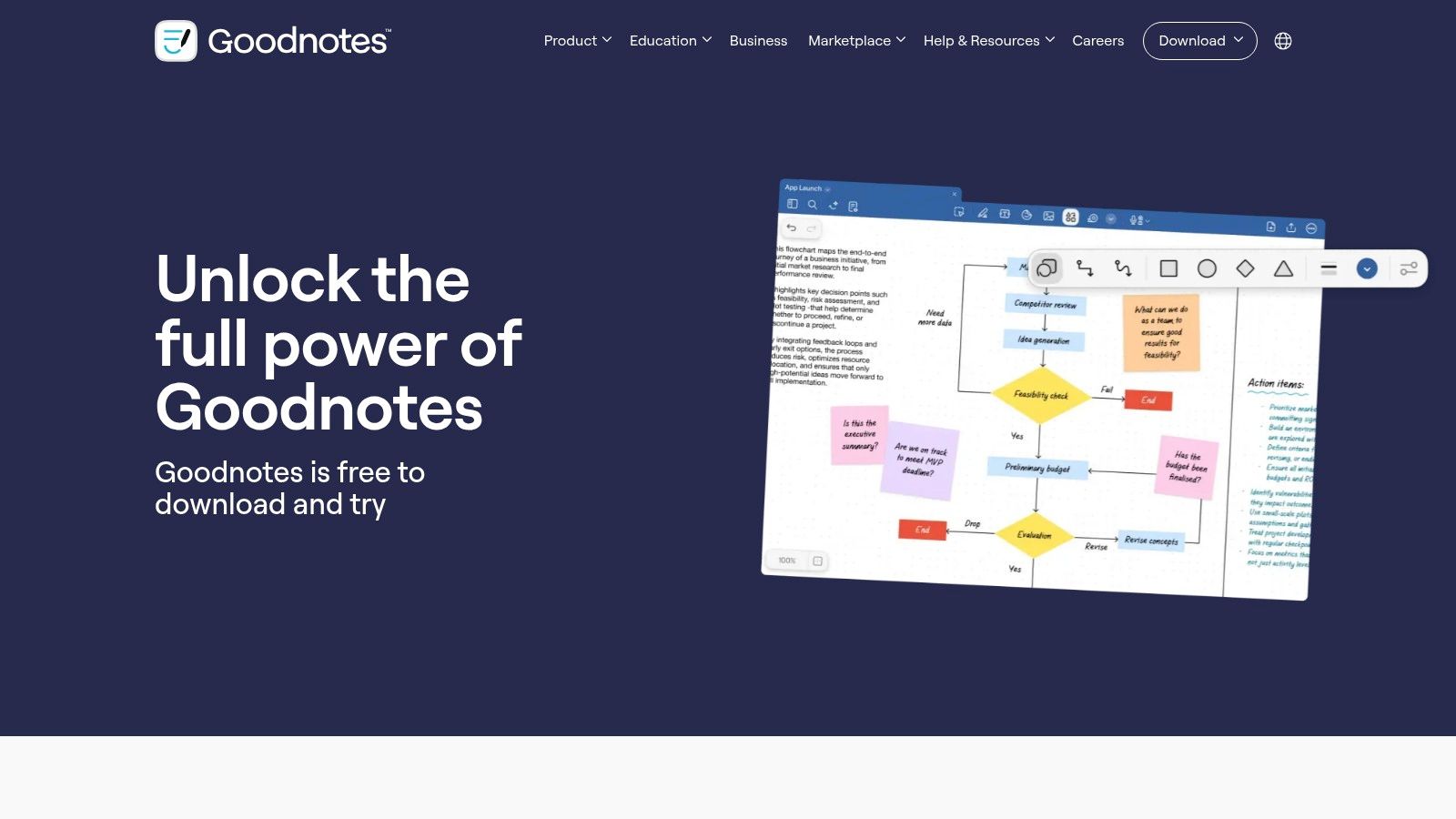
The app’s main advantage is its unparalleled handwriting engine, which feels fluid and responsive. It also offers powerful organizational tools like nested folders and custom outlines, allowing you to structure vast amounts of information effectively. Features like audio recording synced with handwritten notes are invaluable for lectures and meetings, capturing context alongside your key takeaways.
Key Considerations
Goodnotes provides a seamless user experience, especially on Apple devices, with excellent cross-platform synchronization. The recent introduction of AI-powered tools, such as handwriting spell-check and assistance with mathematical equations, further enhances its utility, although these features often come at an additional cost. The app is also deeply integrated into educational settings with special programs for schools.
However, its most advanced features are still heavily optimized for the Apple ecosystem, and some newer additions may not be available on all platforms. The move towards a subscription model and paid AI add-ons has also been a point of contention for some long-time users who preferred the original one-time purchase model.
- Ideal User: Students, educators, and anyone who primarily takes handwritten notes on a tablet.
- Platform: iOS, iPadOS, macOS, Android, Windows.
- Pricing: Free limited version; premium subscription at $9.99/year or a one-time purchase of $29.99.
Website: Goodnotes
9. Notability
A long-standing favorite in the education space, Notability has built its reputation as one of the best note-taking apps for handwriting, particularly on the iPad. Its standout feature is the ability to record audio while you write, with the app synchronizing your ink strokes to the audio timeline. This allows you to tap on any part of your notes and instantly hear what was being said at that exact moment.
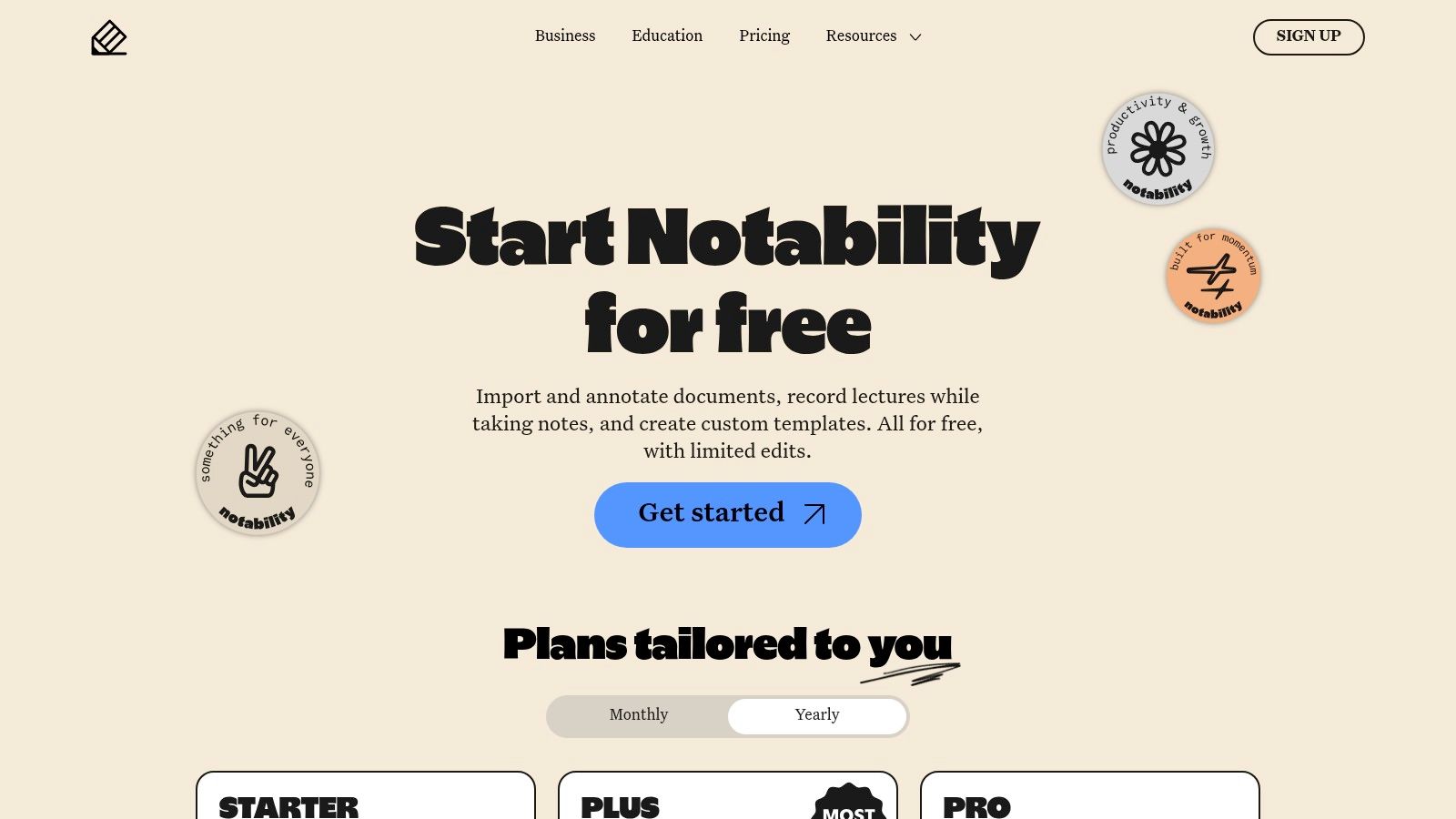
This seamless lecture and meeting capture makes it an invaluable tool for students and professionals who need to document detailed discussions. Beyond its core audio-sync feature, Notability offers robust PDF annotation, a wide array of customizable digital paper and templates, and advanced study tools. The platform continues to evolve with AI features like live transcription and note summaries, further solidifying its position as a top-tier academic and professional tool.
Key Considerations
Notability's user experience on the iPad is exceptionally polished and intuitive, honed over many years of development. The toolset for drawing, writing, and organizing is mature and highly responsive, providing a near-perfect digital paper experience.
However, many of its most powerful features are now locked behind a subscription, moving away from its original one-time purchase model. While a free version exists, it's quite limited. Additionally, its web and Mac versions are less developed than the iPad app, making it a less ideal choice for those who work primarily on a desktop.
- Ideal User: Students, educators, and professionals who frequently attend lectures or meetings and prioritize handwritten notes synced with audio recordings.
- Platform: iOS, iPadOS, macOS, Web (view-only on free plan).
- Pricing: Free limited version; Plus subscription with advanced features like AI, iCloud sync, and unlimited edits available annually.
Website: Notability
10. Bear
Bear is a beautifully designed note-taking app that combines elegant simplicity with powerful features, making it a favorite among writers, bloggers, and developers. It's built around a clean, distraction-free Markdown editor, allowing users to focus purely on their content. The app stands out by using a sophisticated tagging system instead of traditional folders, enabling flexible and multi-dimensional organization with nested tags like #writing/blog/drafts.
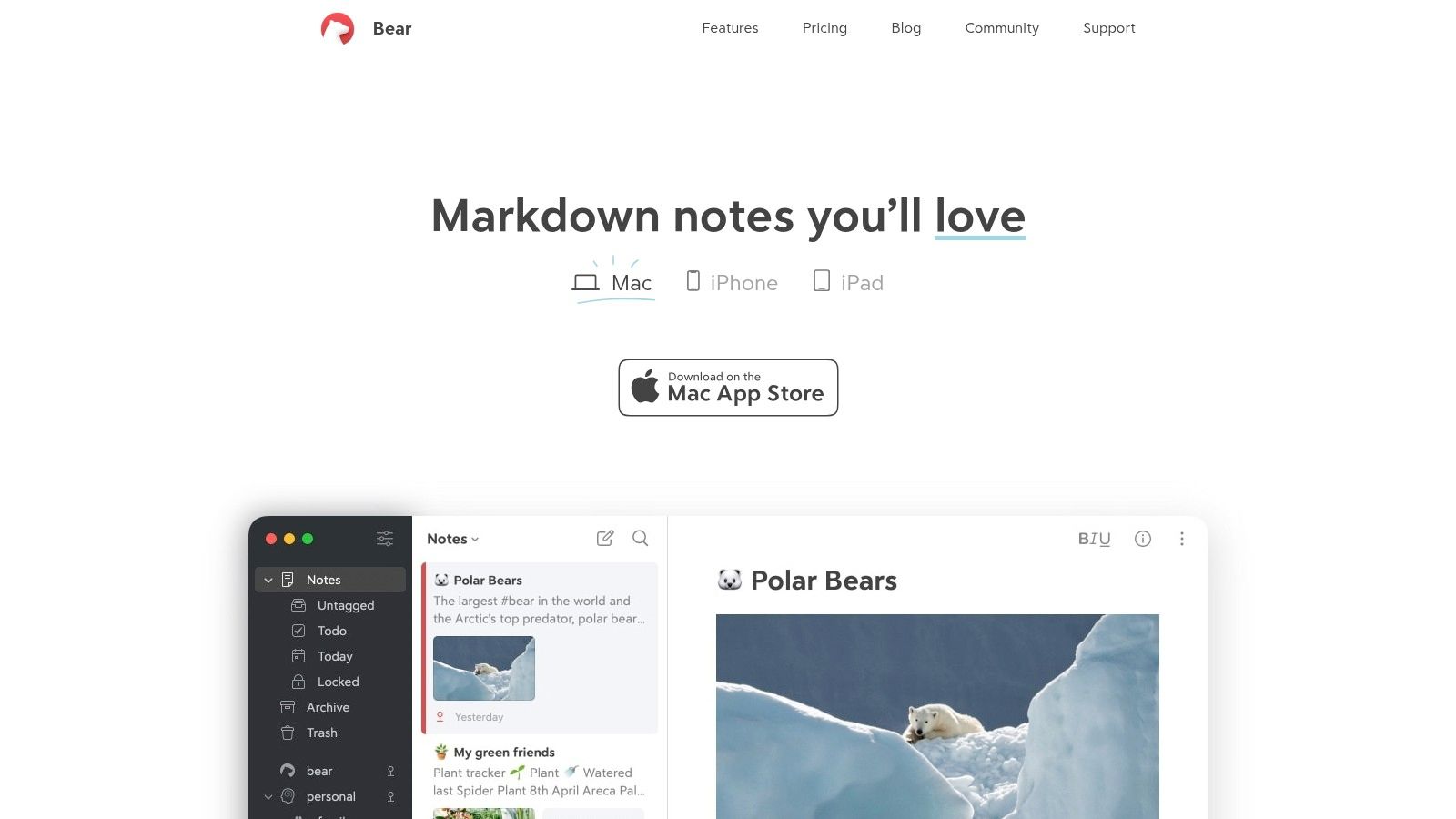
The platform's main appeal lies in its aesthetics and user experience. It offers a fluid and responsive interface that feels intuitive from the start. Features like backlinks, which allow you to create a personal wiki by linking notes together, and advanced search operators enhance its utility for complex projects. For those needing to publish their work, Bear provides a wide range of rich export options, including PDF, HTML, DOCX, and JPG.
Key Considerations
Bear syncs seamlessly across all Apple devices via iCloud, ensuring notes are always up-to-date on your iPhone, iPad, and Mac. The inclusion of OCR search for text within images and PDFs adds another layer of depth, making it one of the best note taking apps for archiving and research. It’s a tool that respects the craft of writing.
However, its primary strength is also its biggest drawback: it is exclusive to the Apple ecosystem, leaving Android and Windows users out. While excellent for individual use, its collaboration features are minimal compared to platforms like Notion, making it less suitable for team-based projects.
- Ideal User: Writers, developers, bloggers, and anyone within the Apple ecosystem who values a beautiful, Markdown-centric writing environment.
- Platform: iOS, iPadOS, macOS, watchOS.
- Pricing: Free basic version; Bear Pro is $2.99/month or $29.99/year for advanced features like sync, themes, and export options.
Website: https://bear.app/
11. Simplenote
For those who believe the best note-taking apps should be fast, clean, and free, Simplenote is the undisputed champion. Developed by Automattic (the company behind WordPress.com), it delivers on its name with a minimalist, distraction-free interface focused purely on plain-text notes. It's the digital equivalent of a reliable pocket notebook: always available, easy to use, and focused on capturing thoughts without friction.
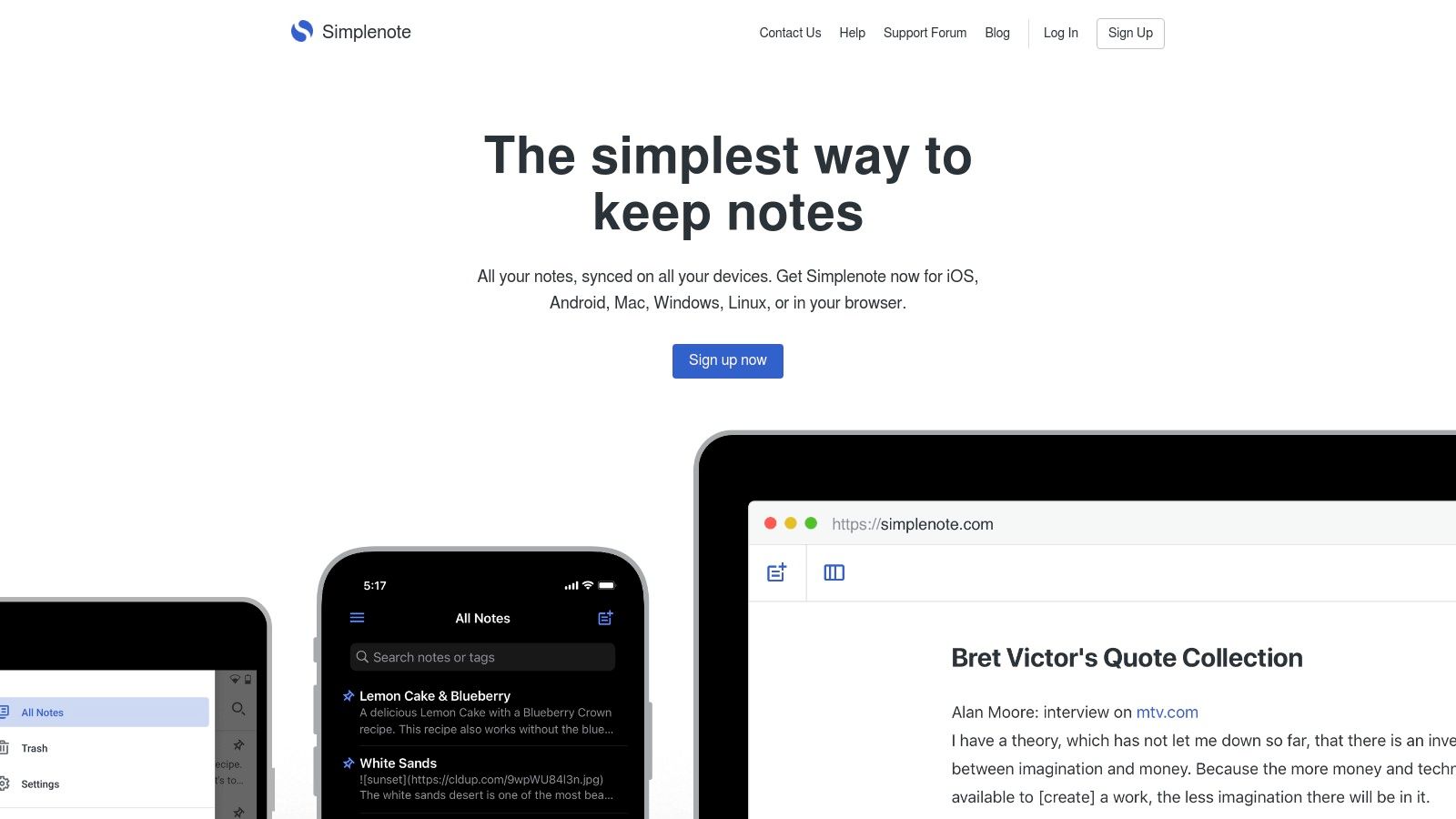
Simplenote’s core strength lies in its lightning-fast, cross-platform synchronization and its commitment to simplicity. It uses a tag-based system instead of complex folders, which, combined with instant search, makes finding information effortless. Its support for Markdown allows for clean formatting, and collaboration features let you share notes with others for real-time editing.
Key Considerations
The user experience is built for speed and reliability across every platform, from web and desktop to mobile. A standout feature is its version history, which lets you slide back in time to review previous edits, providing a safety net against accidental deletions. Because it focuses on plain text, it's not suitable for those who need to embed rich media or transcribe audio directly within their notes; for those tasks, users often convert audio to text before pasting the content into their notes.
However, its minimalism is also its main limitation. The app intentionally lacks support for rich media like images, audio attachments, or handwriting. It doesn't offer the complex databases or wikis found in tools like Notion, making it less suitable for intricate project management.
- Ideal User: Writers, developers, and anyone who values a fast, free, and straightforward plain-text note-taking experience.
- Platform: iOS, Android, macOS, Windows, Linux, Web.
- Pricing: Completely free.
Website: https://simplenote.com/
12. Google Keep
For those who need a simple, fast, and free solution for capturing thoughts on the fly, Google Keep is an outstanding choice. It functions less like a structured notebook and more like a digital wall of sticky notes, making it one of the best note-taking apps for quick reminders, checklists, and spontaneous ideas. Its deep integration with the Google ecosystem means your notes are instantly available across all your devices and accessible alongside Gmail, Calendar, and Docs.
The platform's core strength is its simplicity and speed. You can create a new note, checklist, voice memo, or image note in seconds. Voice notes are automatically transcribed, which is incredibly useful for hands-free capture. The colorful, card-based interface allows you to visually organize your thoughts, pin important notes to the top, and set time-based or location-based reminders that sync with Google Assistant.
Key Considerations
The user experience is straightforward and intuitive, requiring virtually no learning curve. While it lacks the complex organizational features of its competitors, like nested folders or extensive formatting, recent updates have introduced basic text formatting (bold, italics, underline) to add a bit more structure. This makes it perfect for personal to-do lists, shopping lists, and quick brainstorming sessions.
However, its minimalist design is also its main drawback. For long-form writing or building a complex personal knowledge base, its feature set is too limited. It's a tool for capture, not for deep organization or elaborate content creation.
- Ideal User: Anyone embedded in the Google ecosystem who needs a fast, simple, and free tool for capturing quick thoughts, lists, and reminders.
- Platform: Web, Android, iOS.
- Pricing: Free.
Website: Google Keep
Top 12 Note-Taking Apps Feature Comparison
How to Choose the Right Note Taking App for You
We've explored a wide range of digital note-taking tools, from the powerful, database-driven workspaces of Notion and Obsidian to the focused simplicity of Simplenote and Google Keep. We've seen how apps like Microsoft OneNote and Evernote continue to serve millions with their robust, time-tested features, while specialized tools like Goodnotes and Notability have redefined handwritten notes on a tablet. The variety of options highlights a key point: there is no single "best note taking app" for everyone. The ideal tool is a personal choice that should match your unique workflow, creative process, and organizational style.
A feature-packed application is useless if its complexity slows you down. On the other hand, a minimalist app might feel great at first but could become limiting as your needs grow. The goal isn't to find a perfect piece of software, but to build a reliable system that helps you capture, organize, and find information effortlessly. The best app is always the one you consistently use.
Key Factors to Consider
To make your decision easier, consider these critical factors that differentiate the top applications.
- Ecosystem vs. Standalone: Do you want an all-in-one workspace like Notion? Or do you prefer a focused tool that does one thing exceptionally well, like Bear for writing or Whisper AI for transcription, which can then feed into your other systems?
- Structure vs. Flexibility: Do you prefer the organized notebook-and-section layout of OneNote or Evernote? Or does the flexible, interconnected network of notes in a tool like Obsidian better match how you think? This is a key difference between structured organizers and non-linear "second brain" builders.
- Cloud Convenience vs. Local-First Privacy: How important is data ownership to you? Tools like Obsidian keep your files on your device. Most other services, including Google Keep and Notion, are cloud-based, offering easy syncing at the cost of storing your data on their servers.
- Simplicity vs. Power: Where do you fall on this spectrum? For quick thoughts and to-do lists, the speed of Google Keep or Simplenote is unbeatable. For managing complex projects or team knowledge, the deep features of Notion or OneNote are essential.
Your Action Plan for Finding the Right Fit
Reading reviews is a good start, but the next step is hands-on experimentation. Avoid getting stuck in "analysis paralysis," where you spend more time researching tools than using them.
- Identify Your Core Need: First, define your main goal. Are you a student recording lectures? A project manager tracking meeting minutes? A researcher compiling sources? Your primary use case will help you narrow down your options.
- Select Two Contenders: Based on your needs, choose no more than two apps from our list. For example, a writer might compare Bear and Obsidian. A team leader might test OneNote against Notion.
- Commit to a One-Week Trial: Use only your chosen apps for a full week. Get a feel for their quirks and see how they fit into your daily routine. How easy is it to capture an idea? How quickly can you find an old note? Does the app help or hinder your thinking?
- Consider a Hybrid System: You don't have to pick just one tool for everything. The most effective setups often combine specialized apps. A podcaster might use Whisper AI to transcribe audio and then use Notion to organize it into show notes. A student could use Notability to annotate lecture slides and export summaries to Obsidian to connect them with other course concepts.
The goal is to build a personalized toolkit that makes you more organized, creative, and effective. The journey to finding the best note taking apps for your specific needs begins with this first step of intentional experimentation. Start today, and build the digital command center that truly works for you.
Ready to supercharge your note-taking process at the point of capture? Many of the best notes start as spoken words in meetings, lectures, or interviews. Instead of manually typing everything, let Whisper AI create perfectly transcribed, speaker-labeled text for you, ready to be organized in any of the apps mentioned above. Try Whisper AI today and turn your conversations into actionable, searchable notes instantly.
